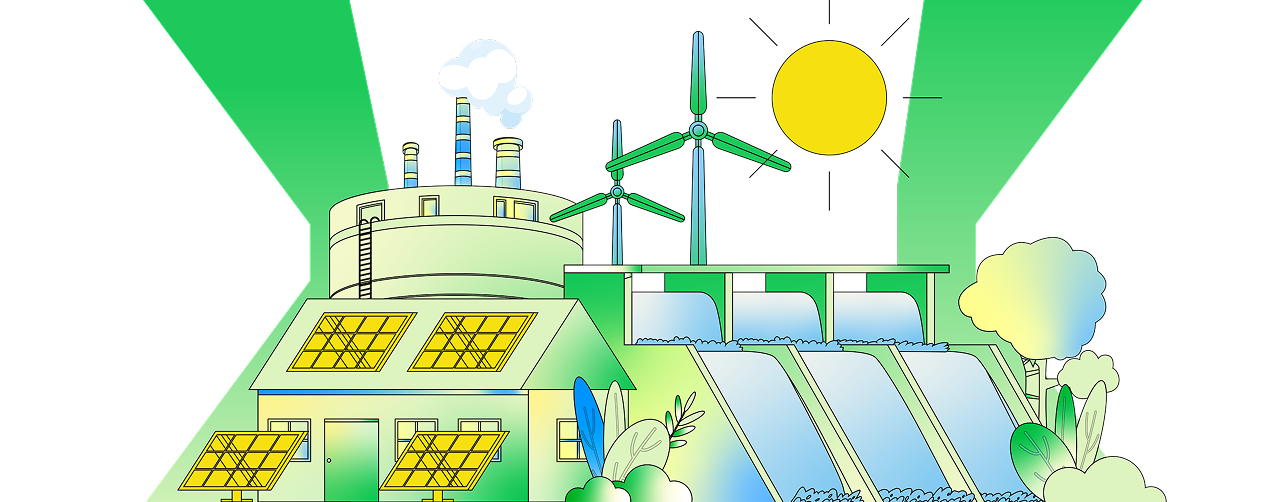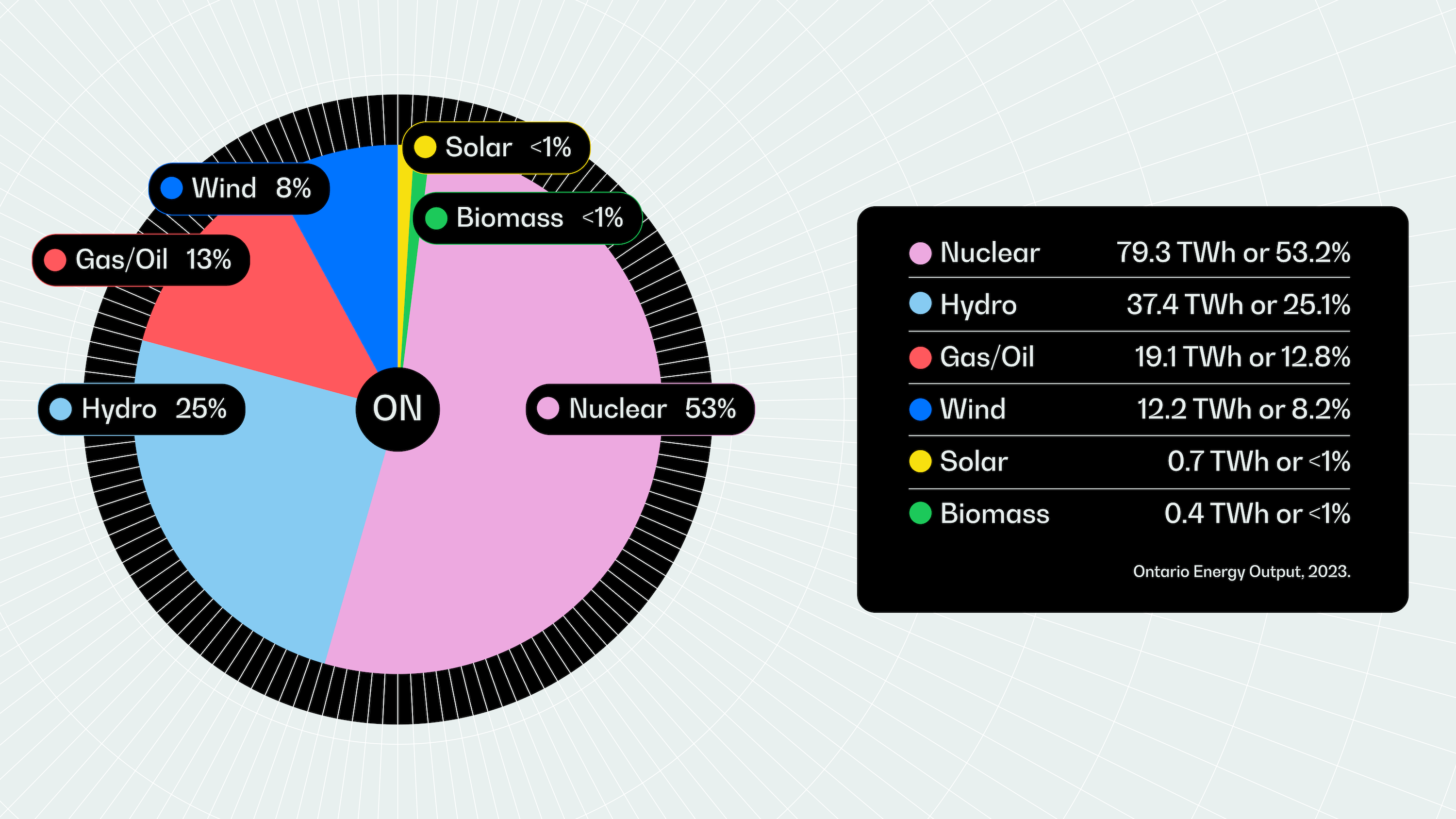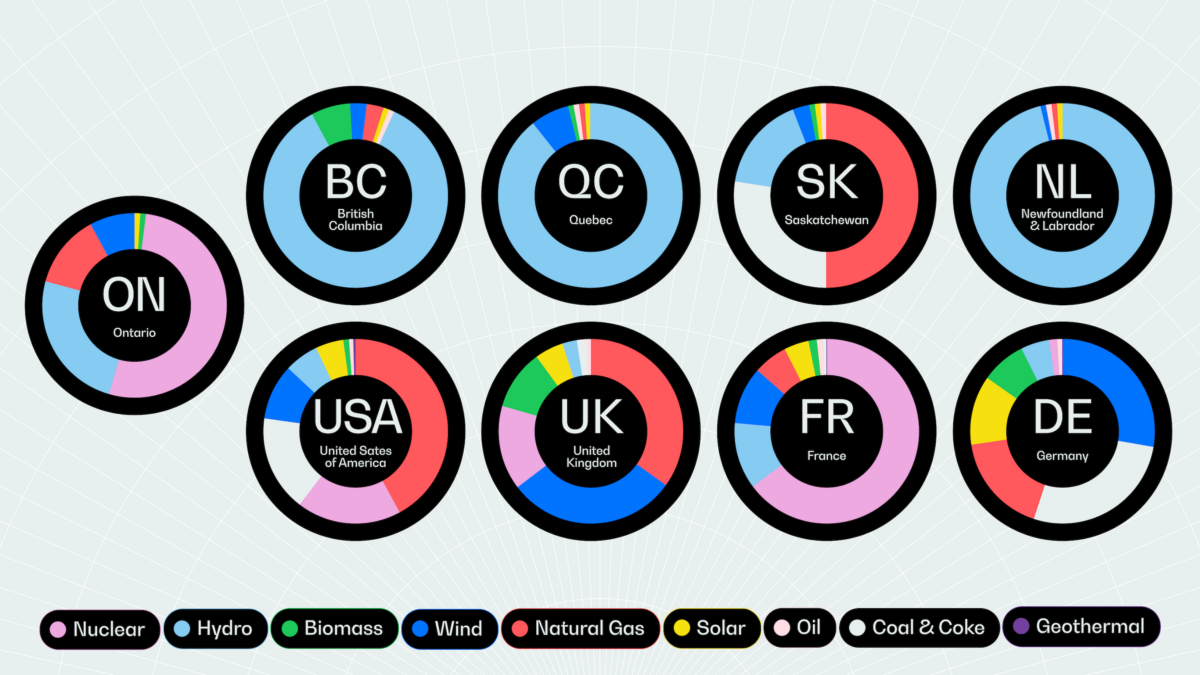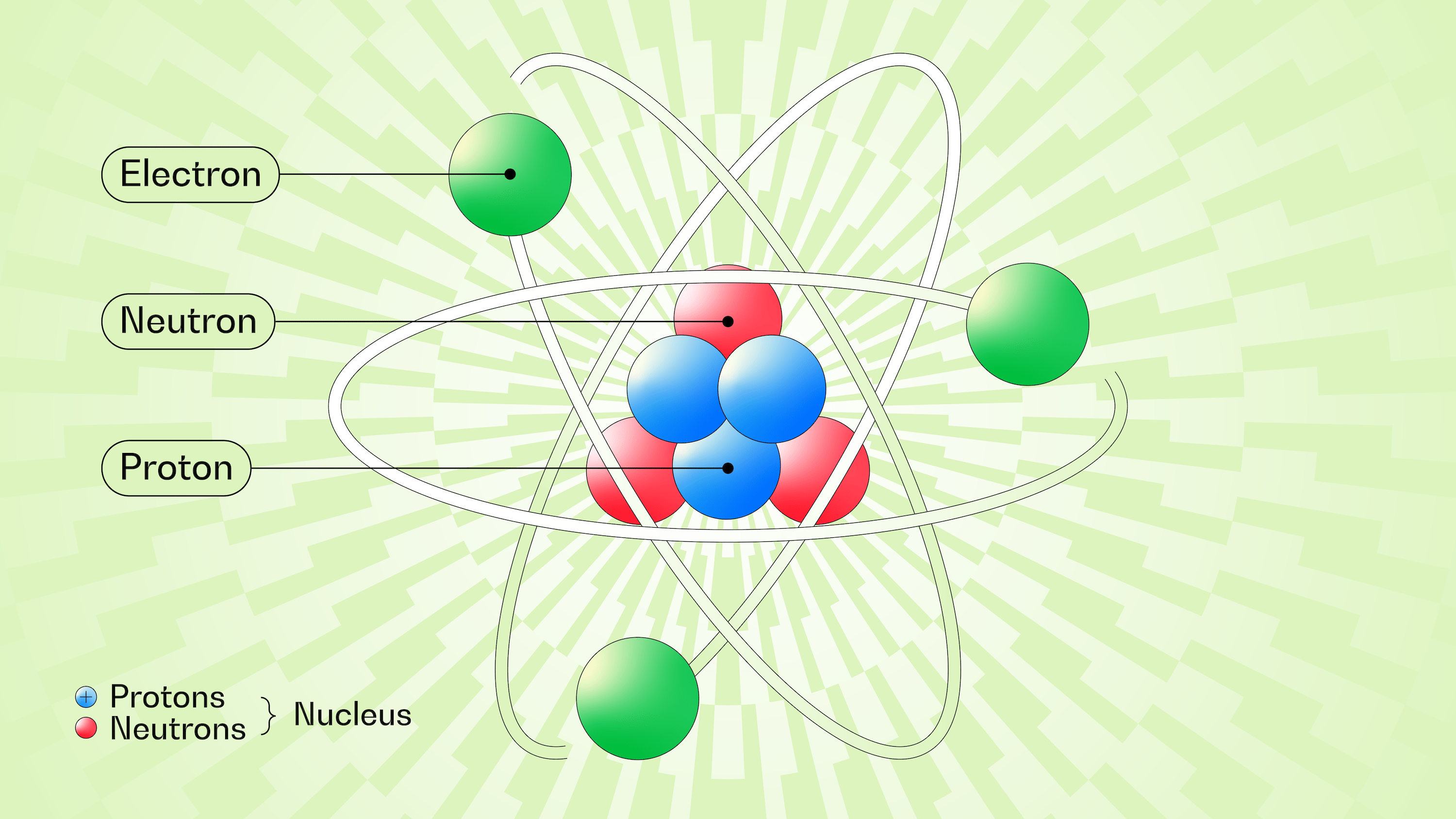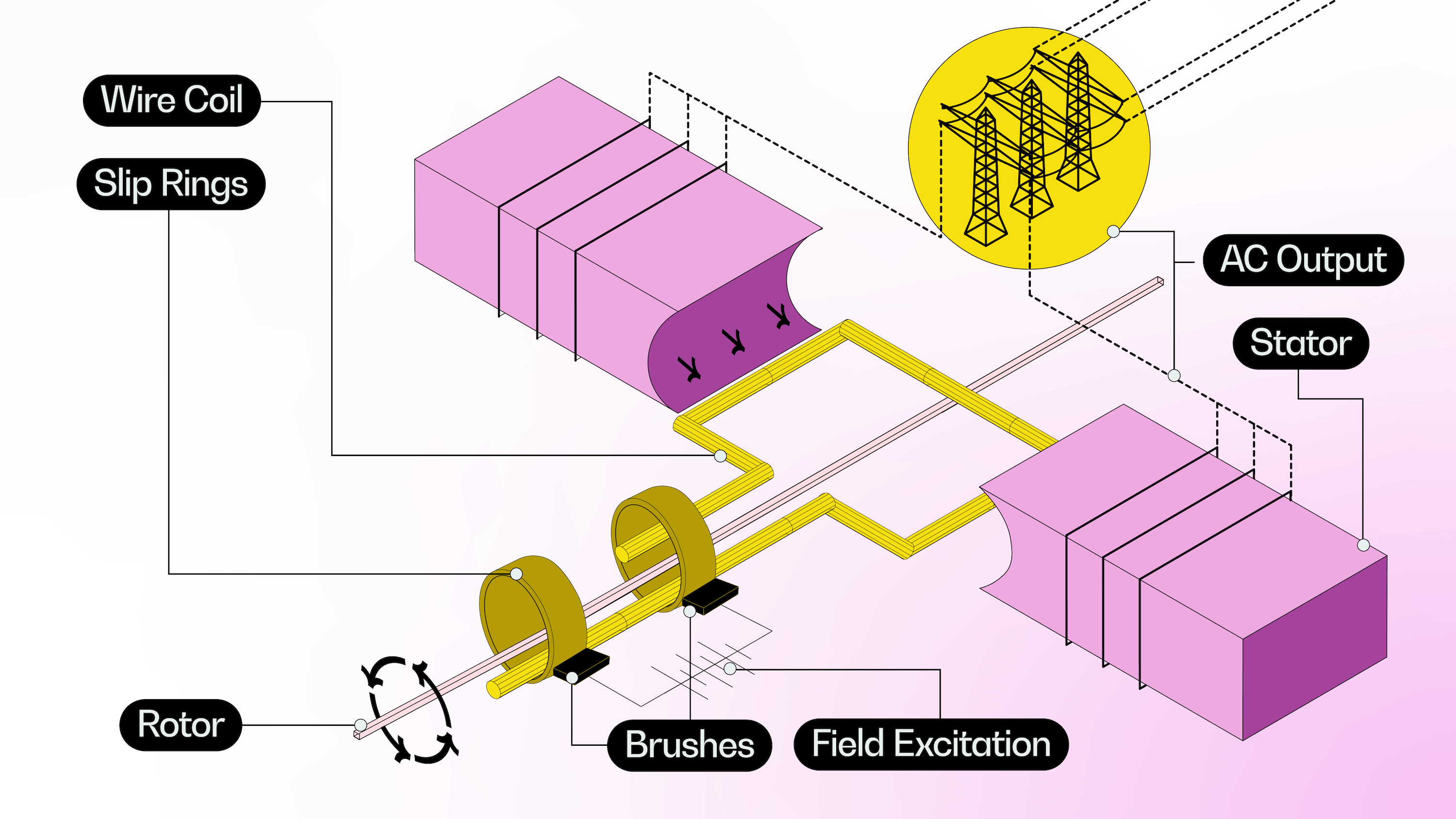ELECTRICITY sources
Electricity is generated from many different sources. Discover how each method works.
NUCLEAR
![Darlington-Nuclear-Generating-Station-Exterior-[19697] 1 (1) 2 Image: OPG's Darlington Nuclear Generating Station](https://wattnext.ca/wp-content/uploads/2025/07/Darlington-Nuclear-Generating-Station-Exterior-19697-1-1-2.png)
Approximately half of Ontario’s electricity supply is from nuclear energy—and that percentage is likely to rise in the future. To understand how nuclear energy is generated, we need to start with a few basics.
All matter is made up of atoms, and at the centre of each of those atoms is a nucleus tightly packed with protons and neutrons. There is a huge amount of energy holding together each densely packed nucleus. This energy comes from the nucleus and is why we call it nuclear energy.
In fact, many naturally occurring elements, such as carbon-14 (which makes carbon dating possible) and potassium (which is abundant in bananas), have nuclei that continually release—or radiate—energy.
Losing this energy causes the nuclei to break down, which is what we call nuclear or radioactive decay. Radioactivity is a natural phenomenon. Even our own bodies are slightly radioactive!
Radioactive Element: Potassium-40
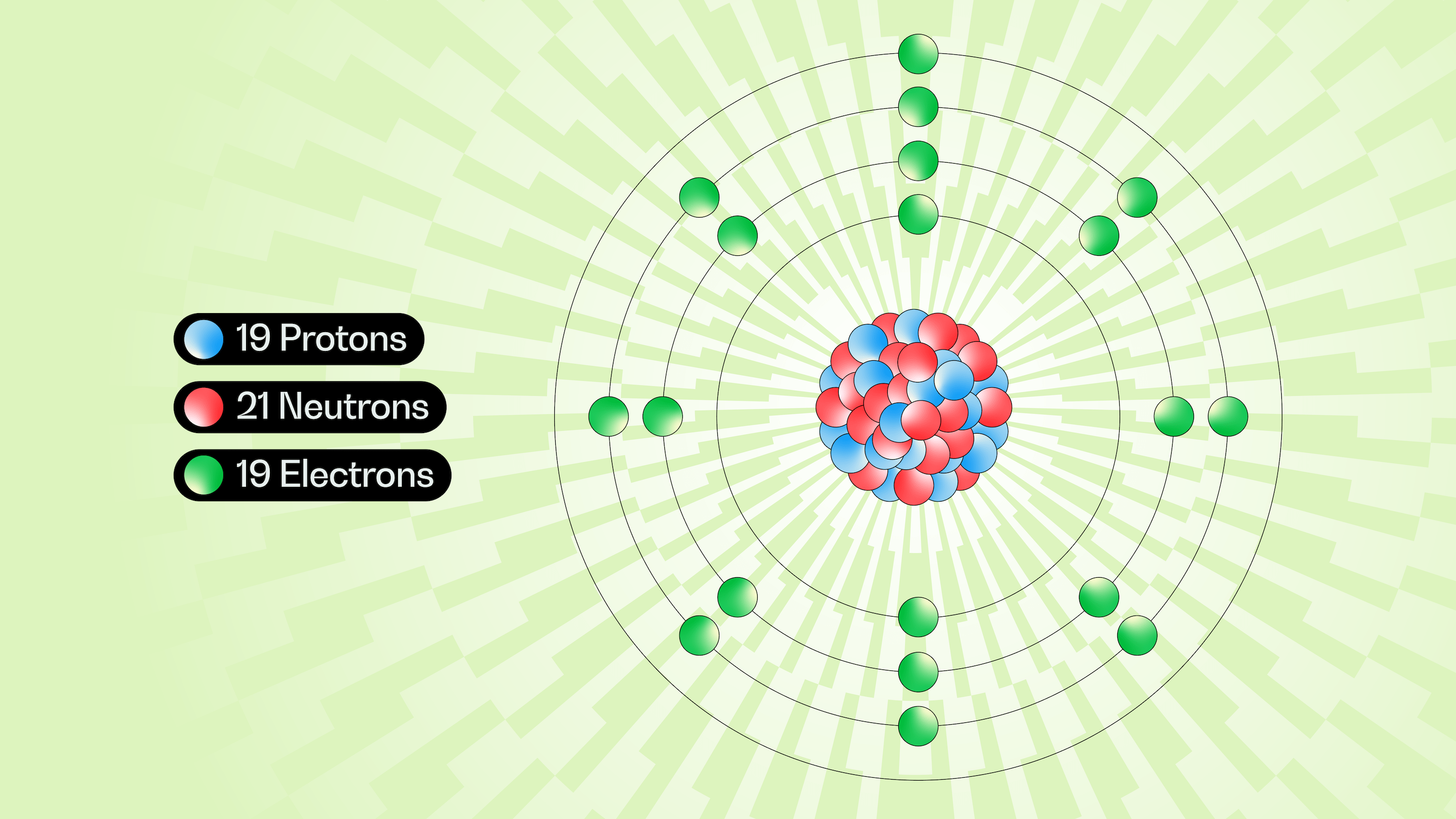
How a Nuclear Station Generates Electricity
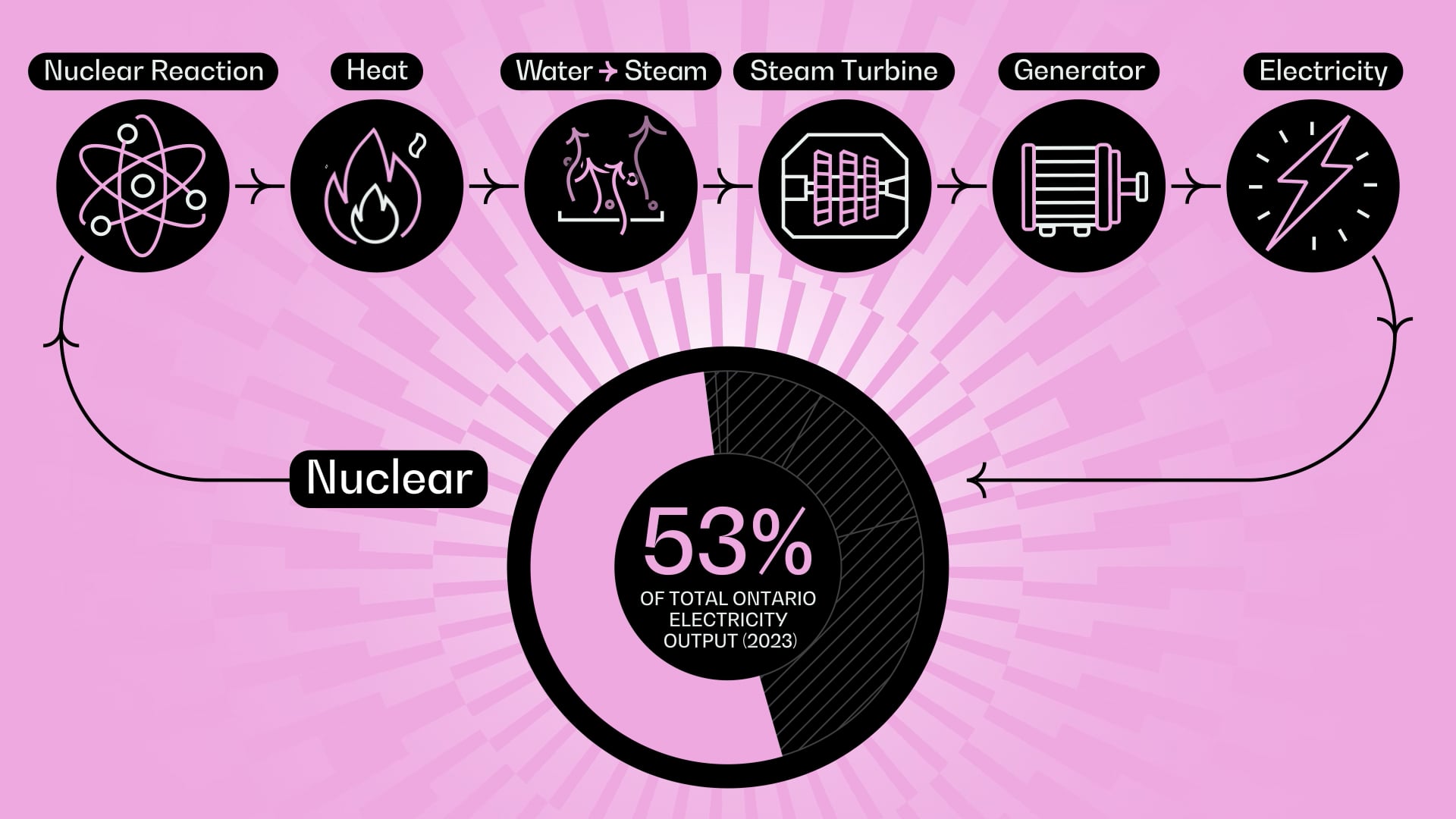
Nuclear energy in our power plants is created through fission—the process of splitting uranium atoms and releasing the energy that holds these nuclei together.
Elements like uranium are chosen because their atoms are already unstable and more easily split apart. That atomic instability also allows a chain reaction to take place, creating an ongoing, controllable energy flow.
Splitting of the Atom: Nuclear Fission
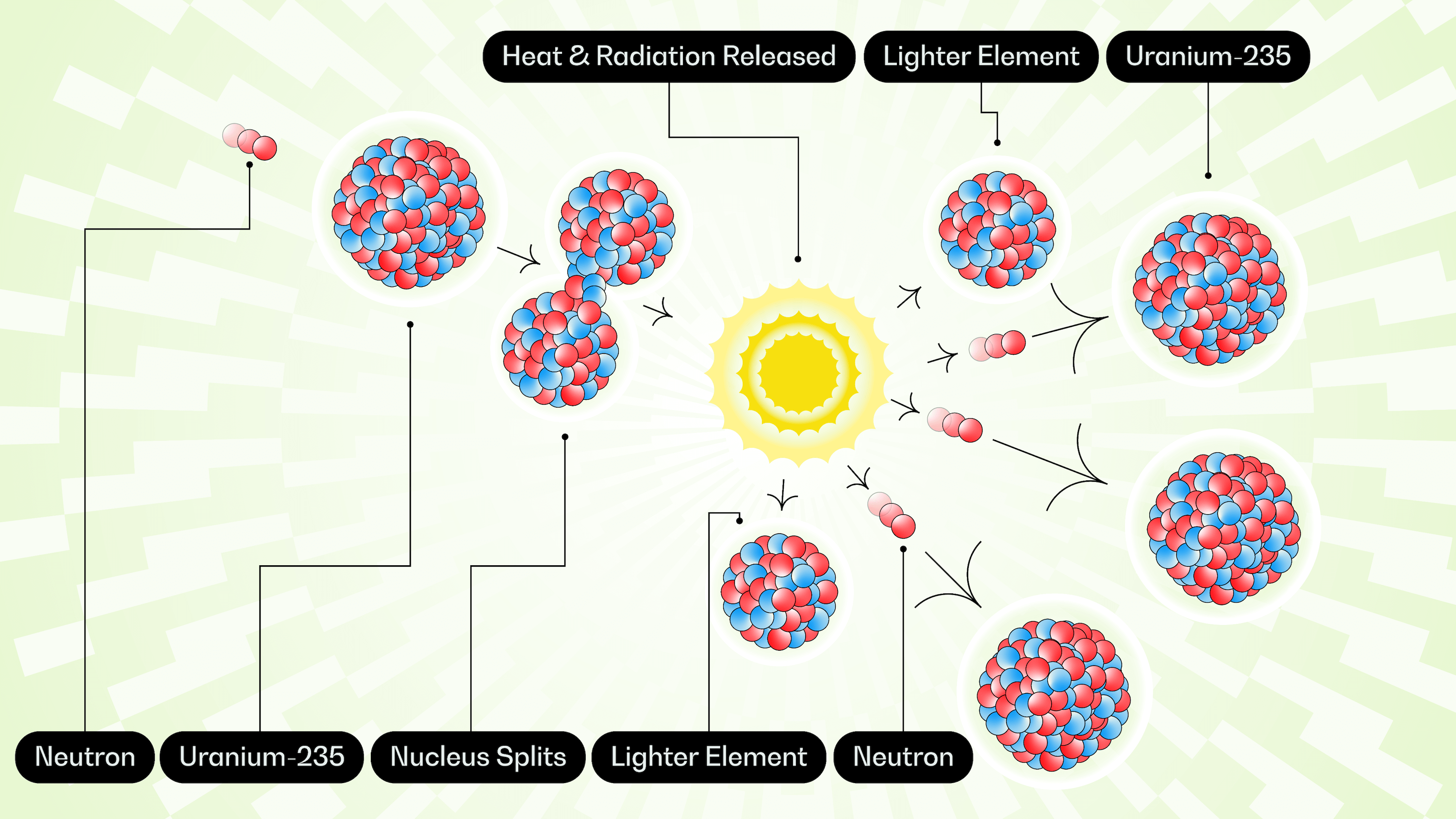
When the uranium atoms split, a huge amount of the energy is released and a lot of it as heat. This heat boils surrounding water to create high pressure steam.
Expanding steam is used to spin a turbine attached to a generator—moving magnets, moving electrons—and produce a constant flow of electricity. Because there is nothing being burnt, there are very low levels of greenhouse gases being released, making nuclear energy one of humankind’s most powerful tools helping to create a more sustainable future.
CANDU NUCLEAR REACTOR
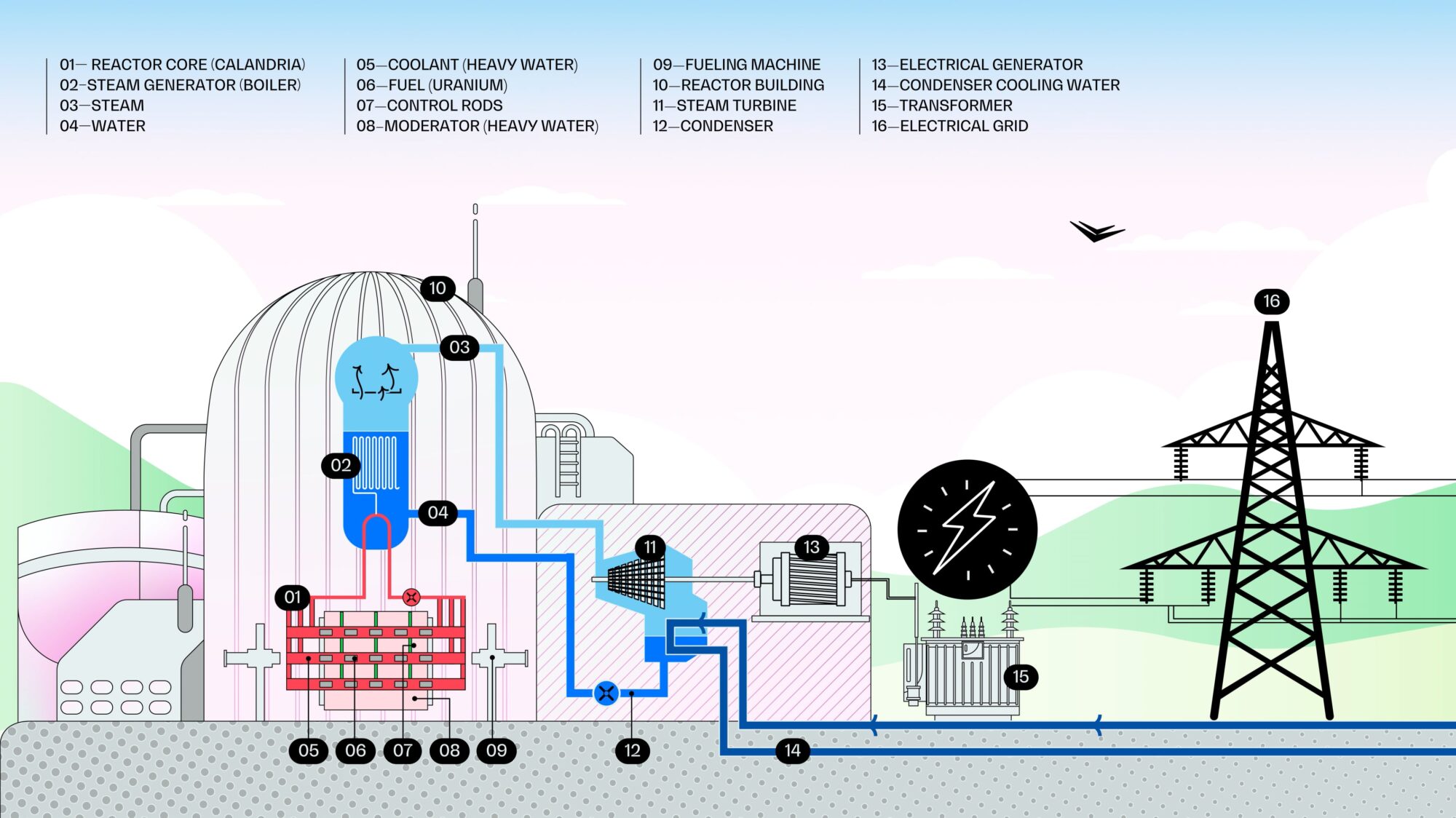

RADIATION
Radiation is energy moving from one place to another as waves or particles. It is all around us and is part of life here on Earth.
Some forms are naturally occurring, and some are human made. Radioactivity is a natural phenomenon with all matter in the universe containing some levels of radioactive atoms. Even our own bodies are slightly radioactive.
We are exposed to radiation every time we take a flight or sleep next to someone else. How it effects our health depends on the type of radiation, the intensity, and the amount of time we are exposed.
Radiation is often divided into two categories, defined by if it can detach electrons from atoms as it passes through matter, making the atoms ions. This is called ionizing.
Non-ionizing & Ionizing Radiation
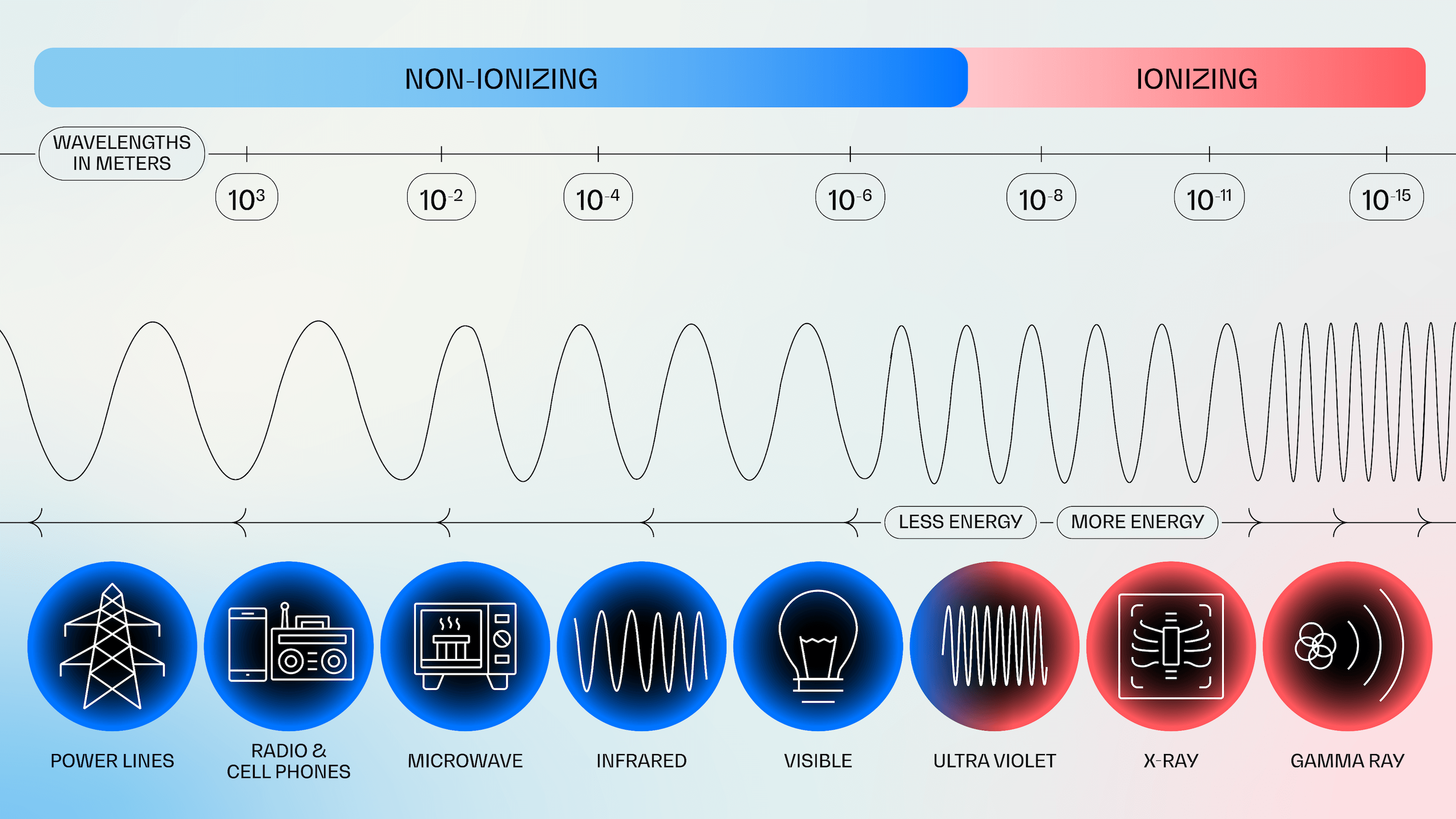
1. Non-ionizing Radiation includes radiofrequency waves, microwaves, infrared, and visible light from sources like the Sun, cell phones, and microwaves.
2. Ionizing Radiation includes high-energy ultraviolet radiation, X-rays, gamma rays, and particle radiation from sources including X-rays, cancer treatments, and nuclear power.
Nuclear power plants are engineered for the controlled release of highly energetic forms of ionizing radiation.
It is these forms of radiation that require special protective measures to keep people and the environment safe.

The measures taken to eliminate exposure to harmful radiation for nuclear workers and people living in neighbouring areas is extraordinary.
In fact, eating a single banana will expose you to more radiation than spending a week working inside a nuclear generating station (because the potassium in the banana is partly radioactive, and the protective measures are that good)!
A Range of Radiation Exposure Levels
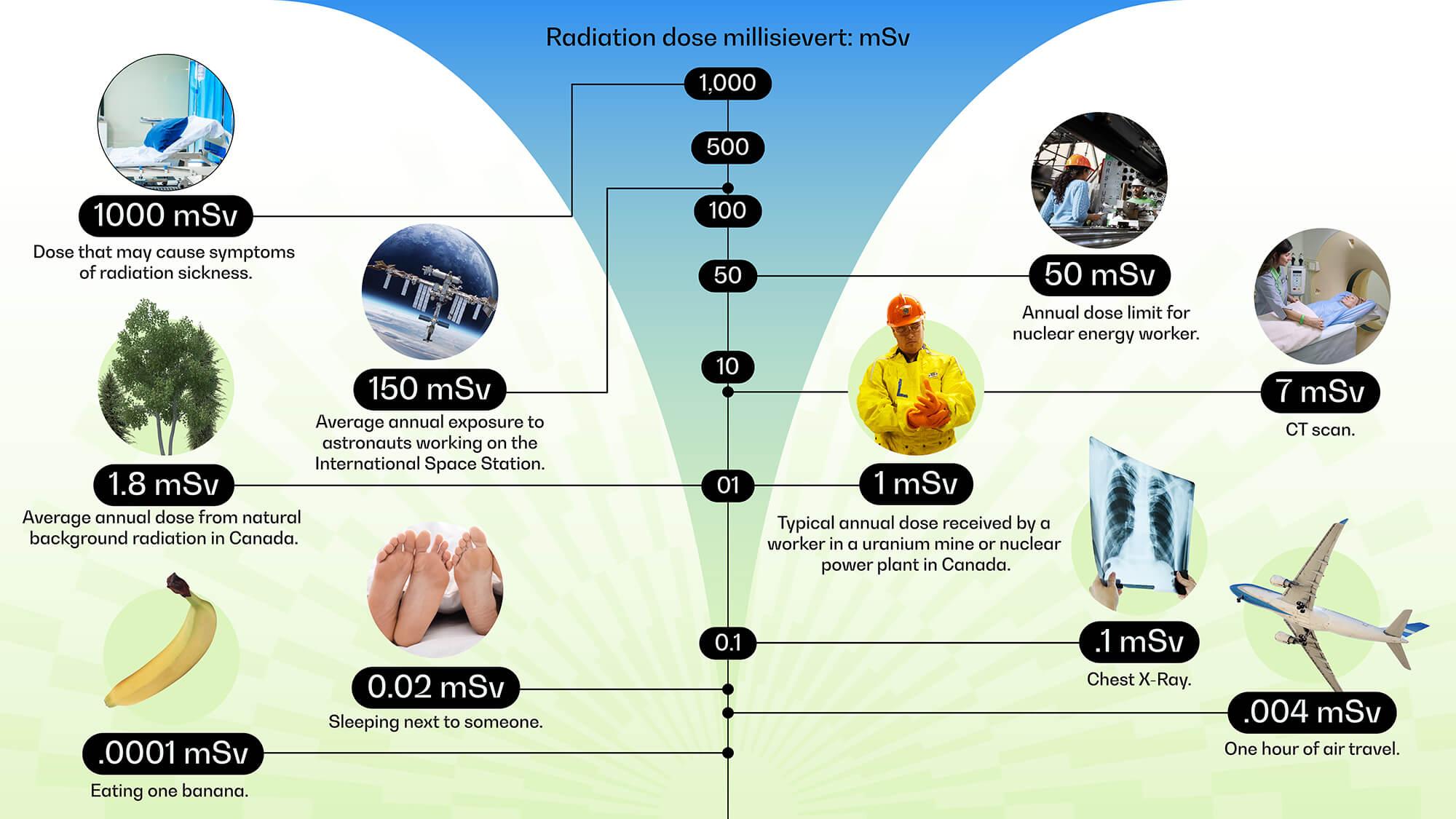

Nuclear power stations in Ontario are among the safest in the world, run under the watchful eyes of the Canadian Nuclear Safety Commission (CNSC).
Under Canadian law, the CNSC regulates the use of nuclear energy and materials to protect health, safety, security, and the environment. It makes sure we implement Canada’s international commitments on the peaceful use of nuclear energy and works to share objective scientific, technical, and regulatory information with the Canadian public.
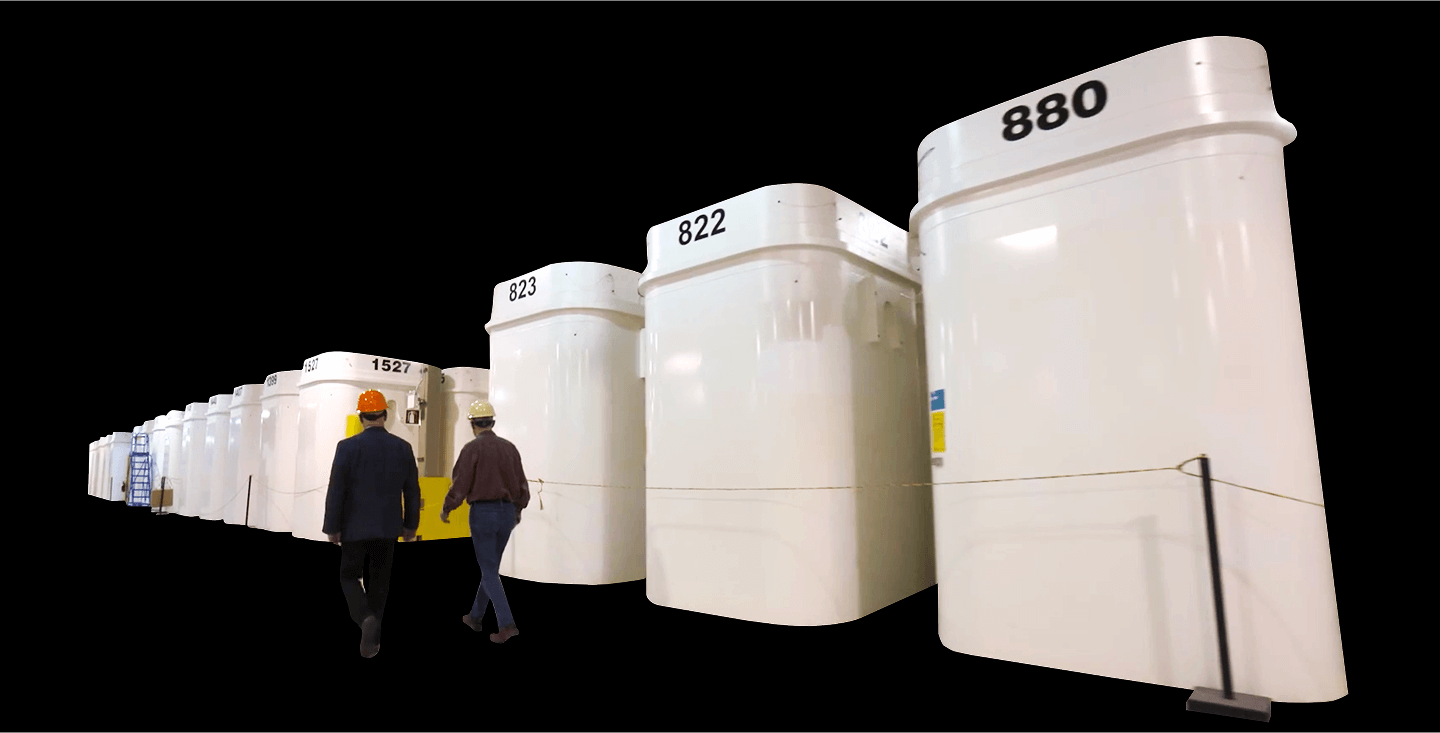
All electricity generation creates waste of some sort. With nuclear power, the waste comes with the added consideration of radioactivity.
A nuclear power generating station creates an exceptionally small amount of waste in comparison to the power it generates. It also emits little to no carbon dioxide, a major contributor to climate change. Nuclear power plants create radioactive materials that are generally categorized as Low, Intermediate, or High-level waste.

LOW-LEVEL WASTE
Low-level waste makes up over 98% of all radioactive nuclear materials in Canada. It is made up mostly of contaminated soil from the remediation of historical nuclear sites, as well as items like cleaning supplies, protective clothing, tools, and other materials brought into radiological zones within the nuclear station.
Some of these materials can be reused or recycled, while others are compacted and stored in secure, monitored facilities specifically designed for low-level waste interim storage.
INTERMEDIATE-LEVEL WASTE
Intermediate-level waste includes items that have come in close proximity with the core of the nuclear reactor or other critical components.
These materials are carefully packaged, and are either securely transported or stay on site where they were produced. All intermediate-level waste is safely stored in steel-lined, in-ground structures in interim storage.


HIGH-LEVEL WASTE
High-level waste materials consist mostly of spent fuel from the reactor. While less than 1% of the total volume of nuclear waste in Canada, these materials are highly radioactive and must be securely stored for the long-term.
Once removed from the nuclear reactor, they are first stored underwater in large storage pools before being moved to dry-storage containers. While the volume of waste is low, the attention and care is high. In fact, the total amount of high-level waste an individual would generate after a lifetime of electricity from a nuclear source could fit inside a pop can. Still, the high-level waste materials must be safely contained for generations. This is a responsibility that’s taken extremely seriously.
Not only are all nuclear waste materials carefully monitored at every stage, there have also been funds set aside to ensure that the materials are properly managed for generations to come, as well as for the decommissioning of nuclear facilities when it becomes time to end nuclear generation at a nuclear station.
It’s also worth noting that at present, only a small percentage of the total energy potential is used during generation at CANDU reactors. Research is underway to find ways to get even more electricity out of these hard working uranium pellets.
Total Nuclear Waste Volumes in Canada


Nuclear stations won’t run forever. Ontario’s CANDU reactors will operate reliably for around 40 years.
After that, they can either be decommissioned or rebuilt and recycled in a process called refurbishment.
Shutting down a reactor and refurbishing the core is a major job—but it can double the lifespan of the reactor and ensure the maximum energy return for investment. Currently, reactors at both Darlington and Bruce Nuclear Stations are undergoing refurbishments, while Pickering Nuclear Station is in refurbishment planning stages. This will add decades of clean energy generation to the mix at a fraction of the cost of building a brand-new reactor.
WATT NEXT:
Deep Geological Repository
As Ontario and the world fight climate change by investing in nuclear energy, one of the results will be an increase in nuclear waste materials. Innovative work is already under way to help make nuclear waste less of a burden for future generations.
While the treatment and storage of low and intermediate-level radioactive waste will remain consistent for the foreseeable future, there is a new solution to long-term storage of high-level waste that many countries around the world are adopting: Deep Geological Repositories (DGRs)—sites that will hold the waste far below the surface in strong, stable rocks for centuries.
Numerous countries in Europe and Asia have already begun construction on these rock-steady storage solutions. The first ever repository will open in Finland in just a few years. Sunken 500-800 metres down (the CN Tower is 553 metres tall, for comparison) into stable bedrock, DGRs offer unparalleled levels of control and isolation for high-level waste. They are designed to securely store spent fuel for thousands of years, with the ability to retrieve materials at any time if needed.
Canada’s Deep Geological Repository
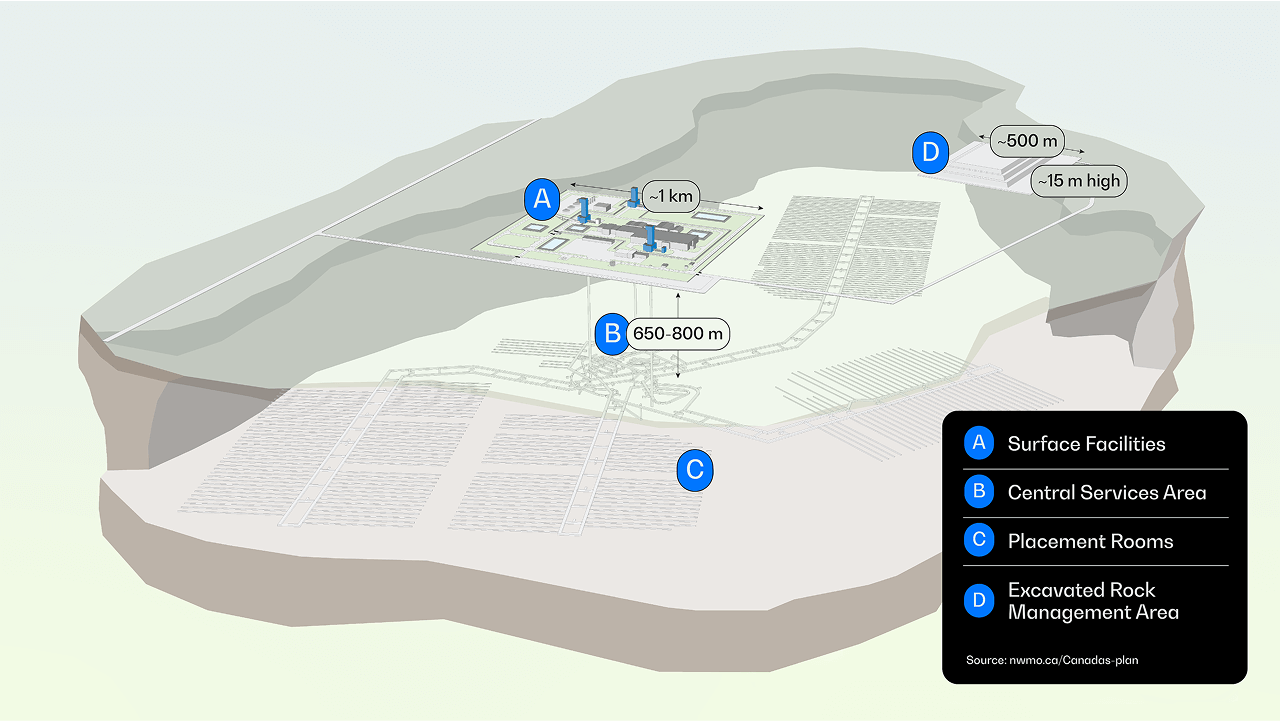
After a selection process of almost 15 years, the site of Canada’s DGR for used nuclear fuel was announced in November 2024 by the Nuclear Waste Management Organization (NWMO)—a not-for-profit organization established by Canada's current and former nuclear electricity producers: Ontario Power Generation, New Brunswick Power, and Hydro-Québec.
Wabigoon Lake Ojibway Nation (WLON) and the Township of Ignace were selected as the host communities for the future site.
The 175-year long project will continue to have rigorous safety standards, informing, involving, and advancing the well-being of the community.
No storage solution should ever be described as a final resting place, but the DGR will provide many centuries of safe management for future generations.
In addition to DGRs, other possible treatments for nuclear waste are being explored including Transmutation.
This treatment bombards the waste with Chirped Pulse Amplification (CPA) lasers to transform the waste into a new version of itself with a far shorter half-life.
Nuclear Waste Transmutation Process
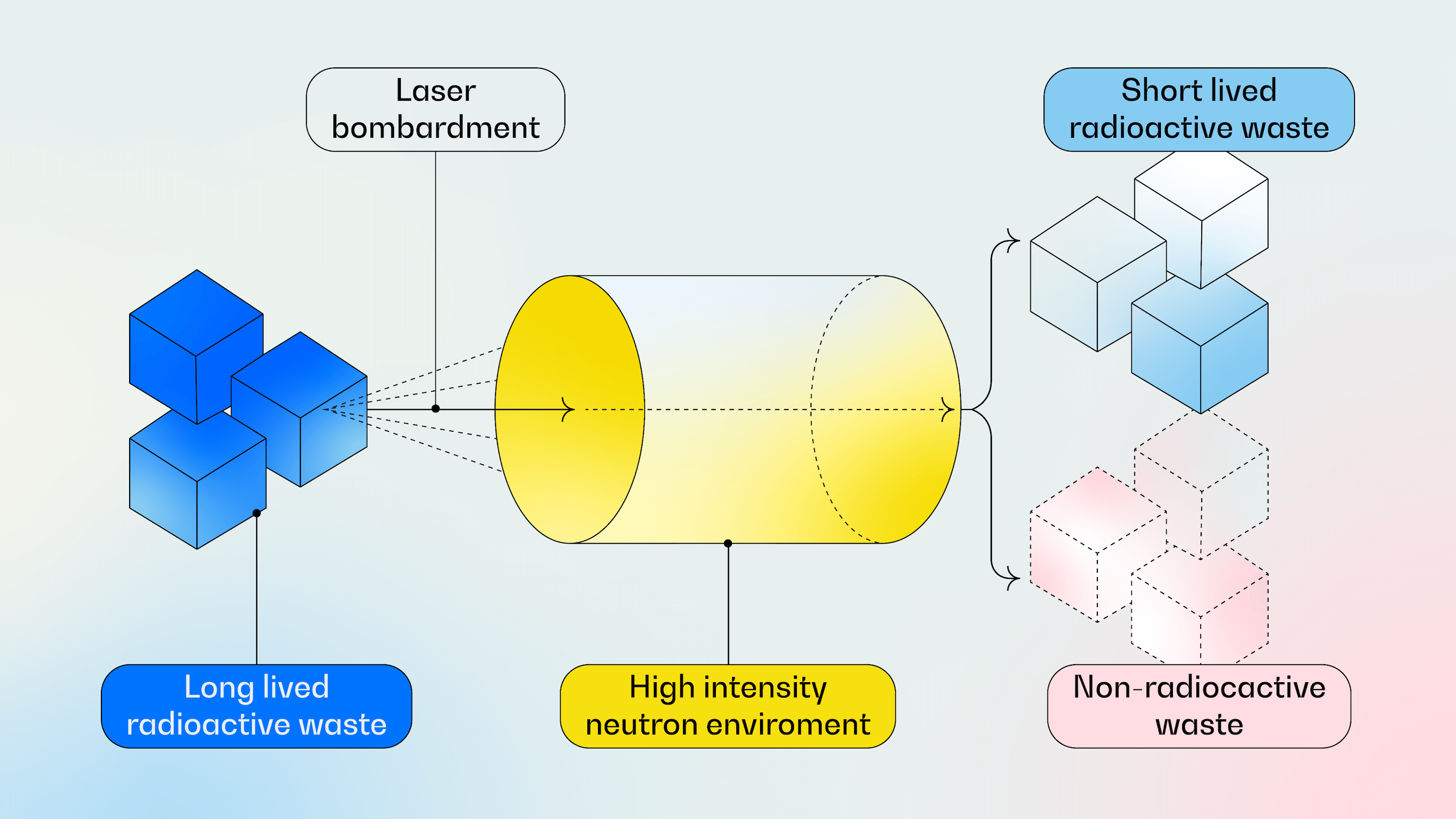
A shorter half-life means shorter time in safe storage.
Another transformative approach? Vitrification, which is when high-level waste is combined with glass precursors and heated to encase the waste in layers of glass. Once embedded in the glass, the radiation is safely locked away. These are great ideas—but not what’s next for Ontario, yet.
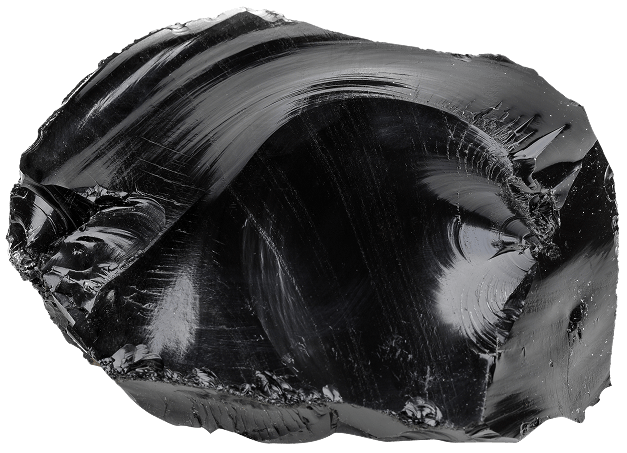

A little-known fact in the world of energy is that nuclear power plants are used to generate more than just clean energy. There are many valuable by-products that are either produced naturally through the nuclear reaction process or that can be created by adding other elements into the reactor.
In these situations, the power of the reactor is used to transform elements into isotopes that can be used for the good of humanity. Today in Ontario, nuclear reactors are used to generate medical isotopes used all around the world. Purposefully generated isotopes such as Cobalt-60 and Molybdenum-99 are widely used across Canada and around the world for different medical applications. Cobalt-60 is primarily used to sterilize medical equipment and to treat cancer patients through radiation therapy, while Molybdenum-99 is used to produce Technetium-99m, a radioisotope essential for diagnostic imaging in nuclear medicine. Together with nuclear by-products Carbon-14, Helium-3, and Tritium, these locally-made isotopes are doing important work for us all.
WATT NEXT: MORE ISOTOPE PRODUCTION
Molybdenum-99 is a recent addition to the capabilities of the Canadian designed CANDU reactors. Their unique design means medical isotopes can be produced without interrupting the generation of power.
Further research suggests Yttrium-90, used to treat liver cancer, and Lutetium-177, used to treat prostate cancer, can also be produced.

Tritium is one of the by-products of nuclear power generation, and it’s used across the world for medical research and self-powered lights. Its future use could be even more exciting.
Combined with Deuterium, another nuclear by-product, it could theoretically create vast amounts of energy in fusion reactors. If theory becomes practice, Tritium will be even more valuable than it is today.
WATT NEXT: MODULAR REACTORS
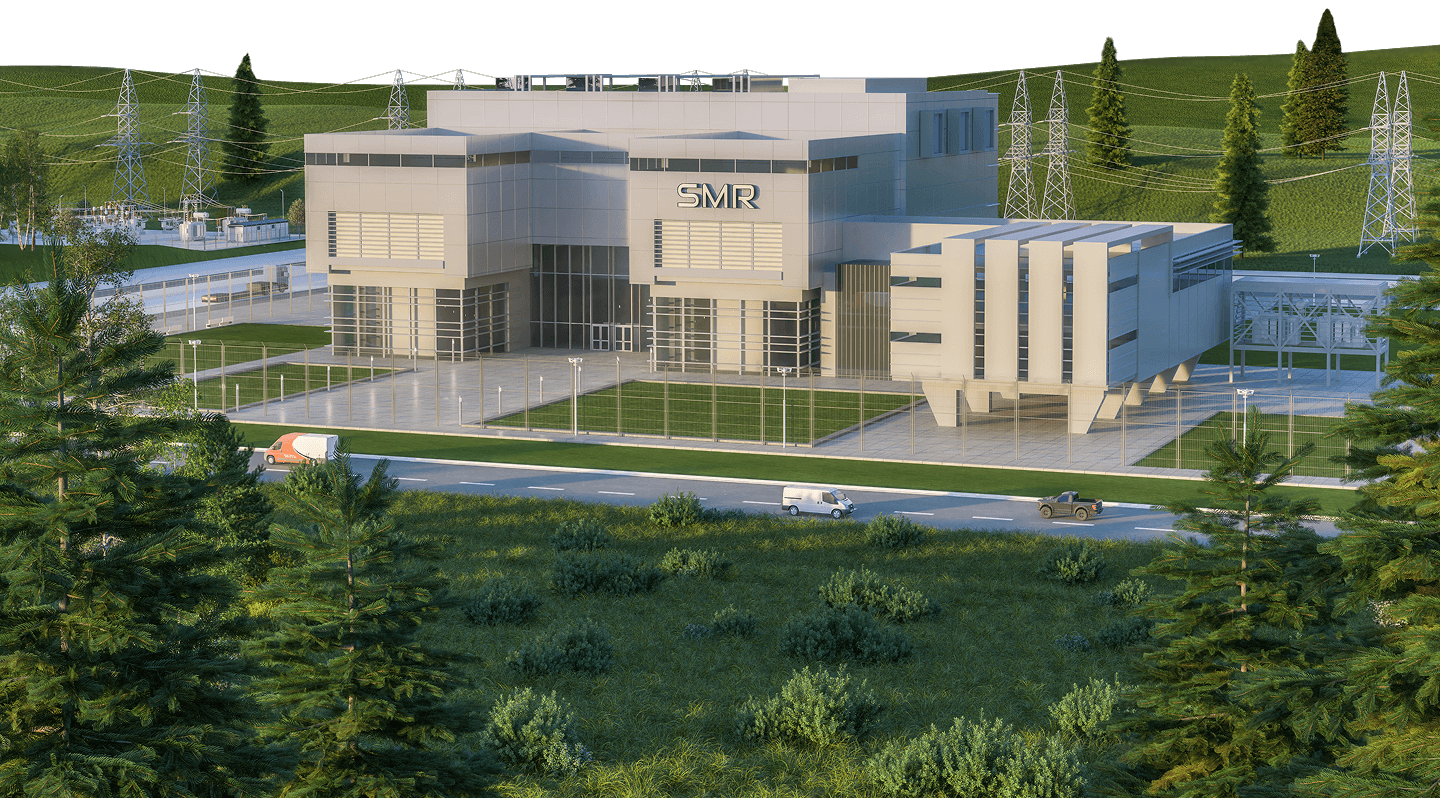
Some of our best tools for taking on climate change are being built right now. Small Modular Reactors (SMRs) have the potential to make a big impact. These new reactors are a fraction of the size of a regular nuclear fission reactor and can be manufactured and transported to more remote areas to provide clean electricity.
There are also Micro Modular Reactors (MMRs) in development, which are even smaller. Able to power a community or a large industrial complex with clean, reliable energy for decades, SMRs and MMRs are ready to reduce our reliance on polluting fossil fuels and lead the way in fighting climate change.
North America’s first fleet of four SMRs are being constructed on the grounds of the Darlington Nuclear Station. Each of the planned SMRs is expected to produce 300MW—enough electricity to power 300,000 homes. The four SMRs together will be capable of powering 1.2 million homes. Once they are safely online, we can expect to see more of these small wonders installed across the country in the coming decades as we increase our efforts towards a more sustainable clean energy future.
In addition to fission, nuclear energy can also be generated through a process called fusion where multiple nuclei combine into one, releasing huge amounts of energy in the process.
This is what fuels stars, like our Sun. Around the world, there is a large amount of work exploring fusion reactions here on Earth that is looking at whether these nuclei can be generated and sustained to produce electricity in the same way fission is used today.
Merging Atoms - Nuclear Fusion
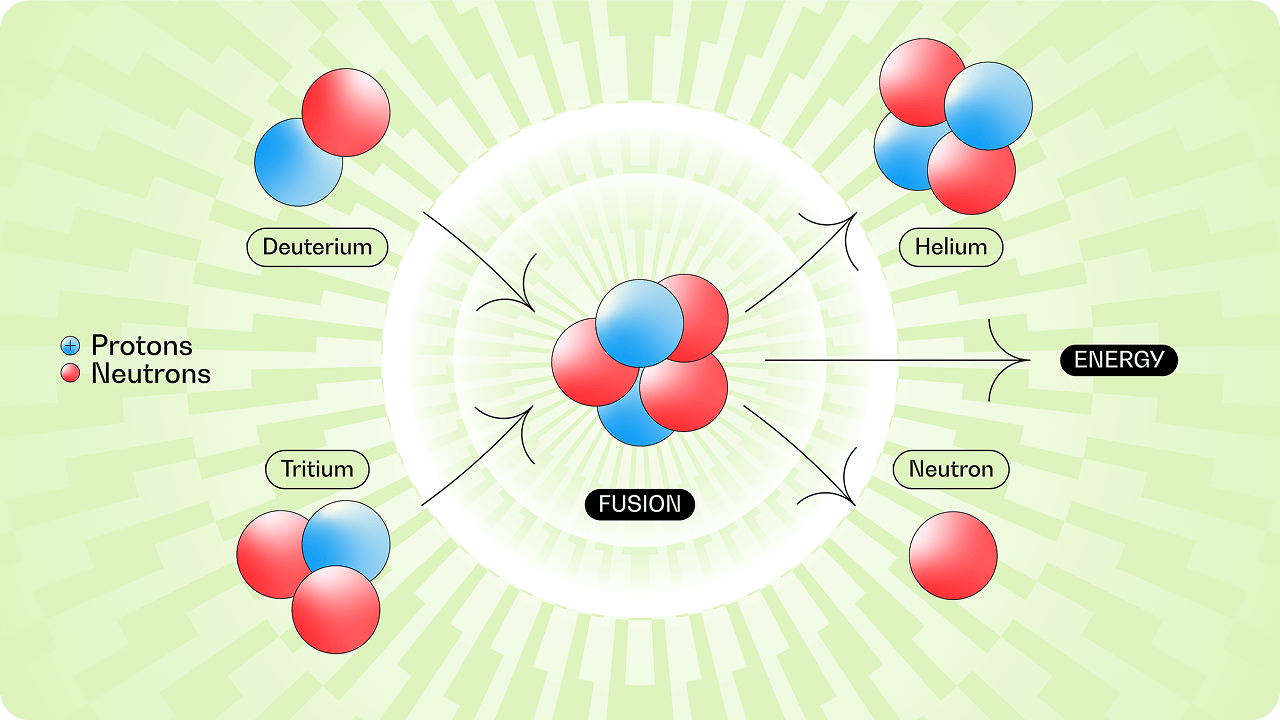
Tritium and Deuterium, both by-products from fission reactors, could be used to create vast amounts of energy in fusion reactors.
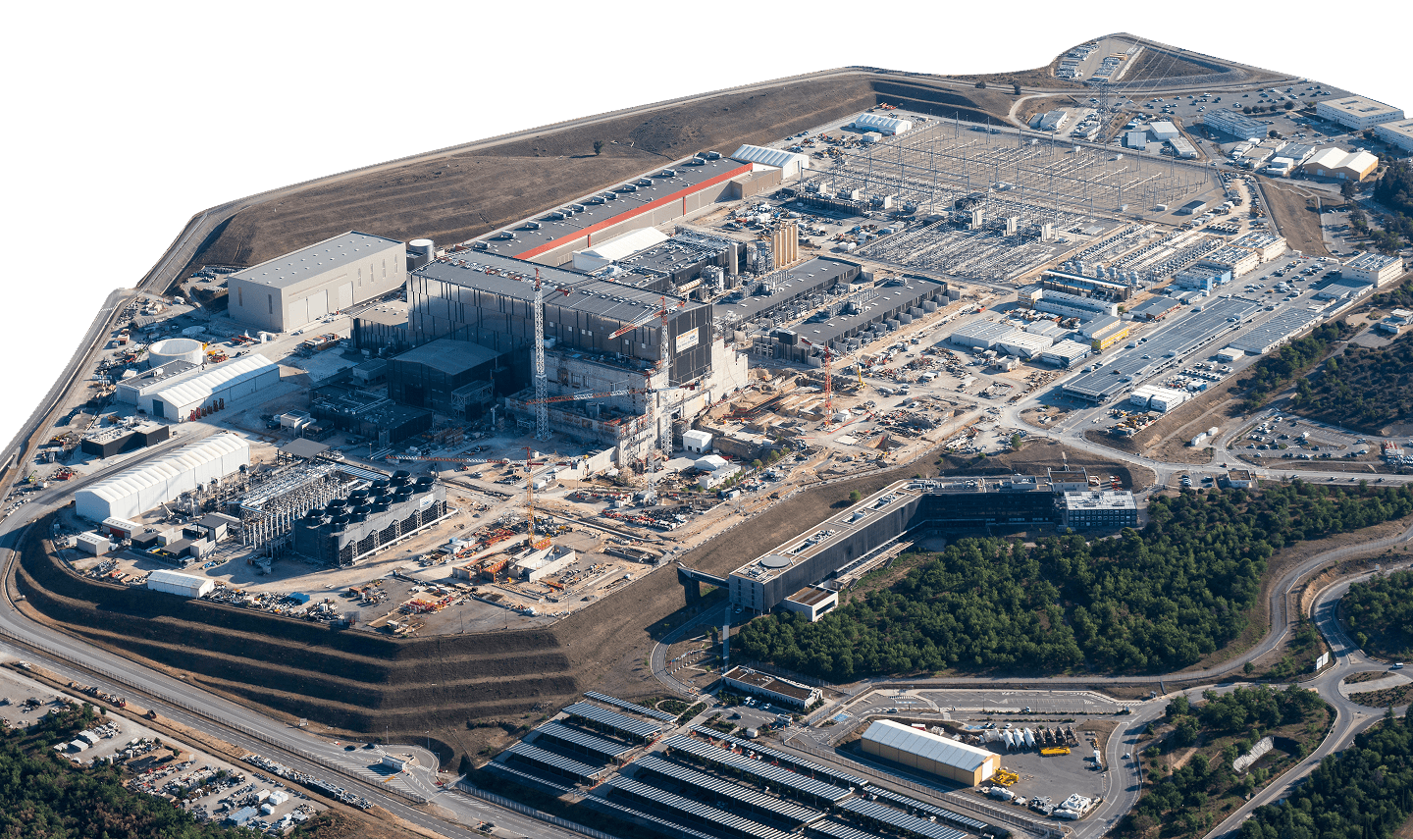
In southern France, ITER—a collaboration of 33 nations—is building the world's largest magnetic fusion device called a tokamak. This experiment is designed to prove the possibility of large-scale fusion power production.
A partnership between OPG and Stellarex, an American fusion energy technology company, is a very early step for fusion reactor exploration in Ontario.
It recognizes the role fusion may play as Ontario’s demand for clean energy increases over the next several decades. Will we see vast amounts of electricity generated by fusion reactors in the future? Perhaps. But as of today, it’s only theoretical and not what’s next in nuclear power generation.
Hydro
Over 60% of Canada’s electricity is generated by waterpower.
Hydroelectric stations have been developed in Canada where the geography and hydrography were favourable, particularly in Quebec.
Other areas producing large quantities of hydroelectricity include British Columbia, Newfoundland and Labrador, Manitoba, and Ontario.
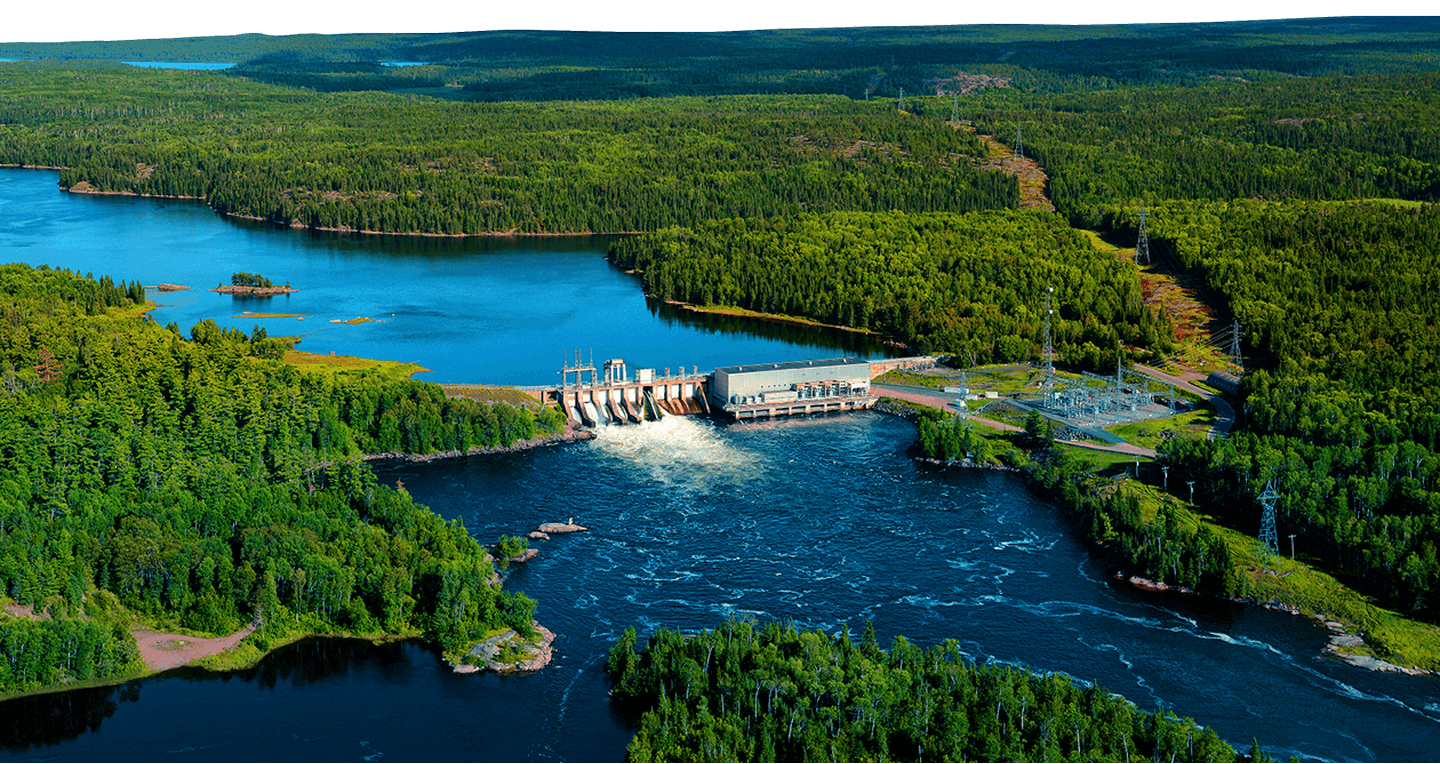
The energy contained in the natural flow of water can be transformed into energy we can use. And humans have been harnessing it for thousands of years!
Early uses of waterpower included converting the energy to mechanical power for milling and sawing, as well as for irrigation. Hydroelectricity, or hydroelectric power, goes one step further by converting water’s mechanical power to electric power.
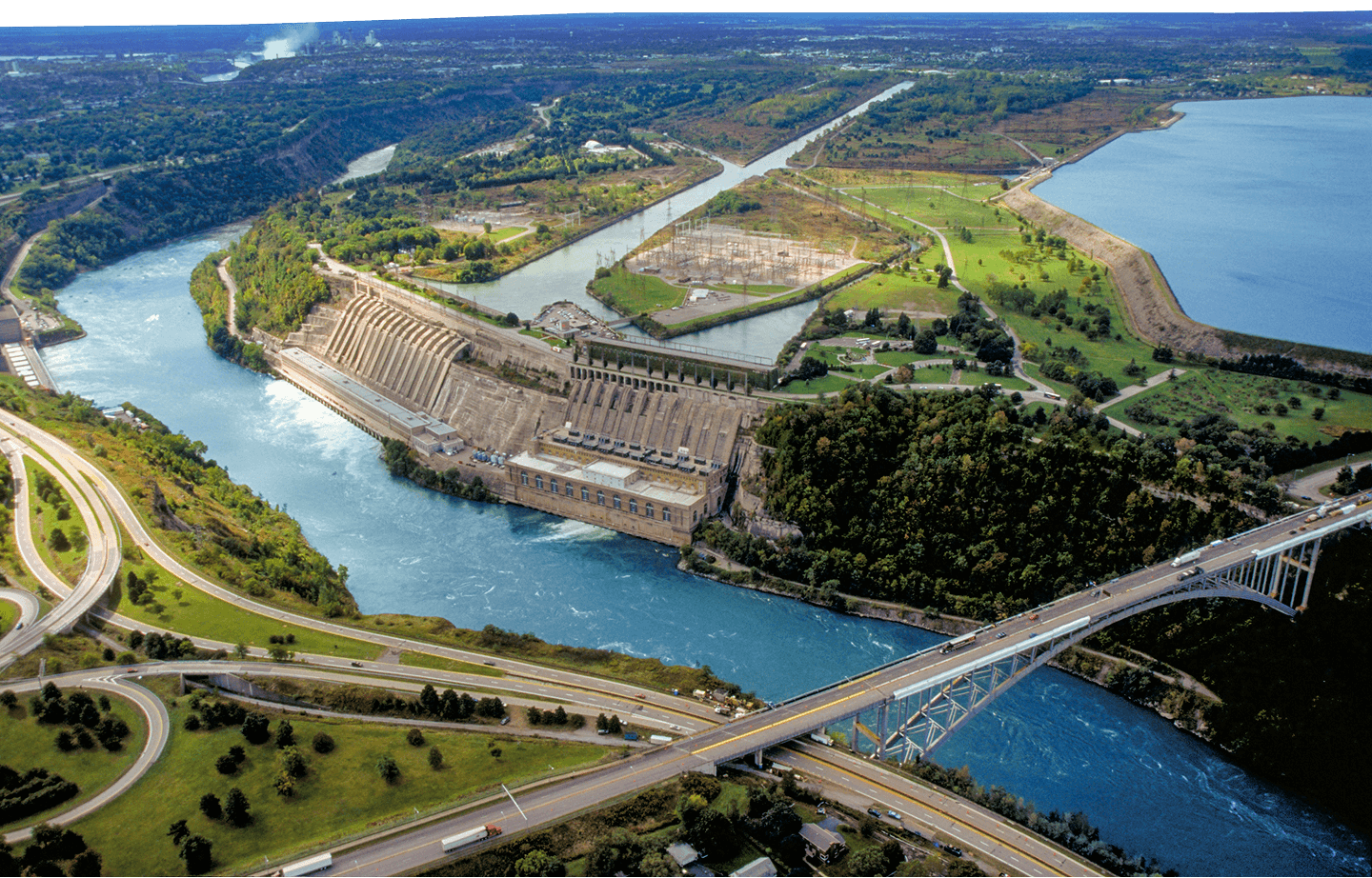
In Ontario, flowing water is a resource we have in abundance. In fact, until the late 1950s, 100% of Ontario’s electricity was generated by waterpower.
OPG’s Sir Adam Beck I Generating Station went into service in Niagara Falls, Ontario towards the end of 1921. At the time, it was the largest hydroelectric station in the world. Today, there are 224 waterpower facilities operating in Ontario, over 40 of which are a century or more old. Together, these facilities provide roughly a quarter of Ontario’s electricity.
Flowing water has energy. It also flows downhill. And the higher the hill, the more energy it has.
Flowing water can be directed—by dams, for example—so that some of its energy turns the blades of a turbine attached to a generator to produce a flow of electricity. In some places, waterpower facilities make subtle changes to the landscape. In others, dams of varying complexity and size are built and used on waterways to increase and control the height, volume, and speed of the water before directing it to a turbine.
How Hydroelectricity is Generated
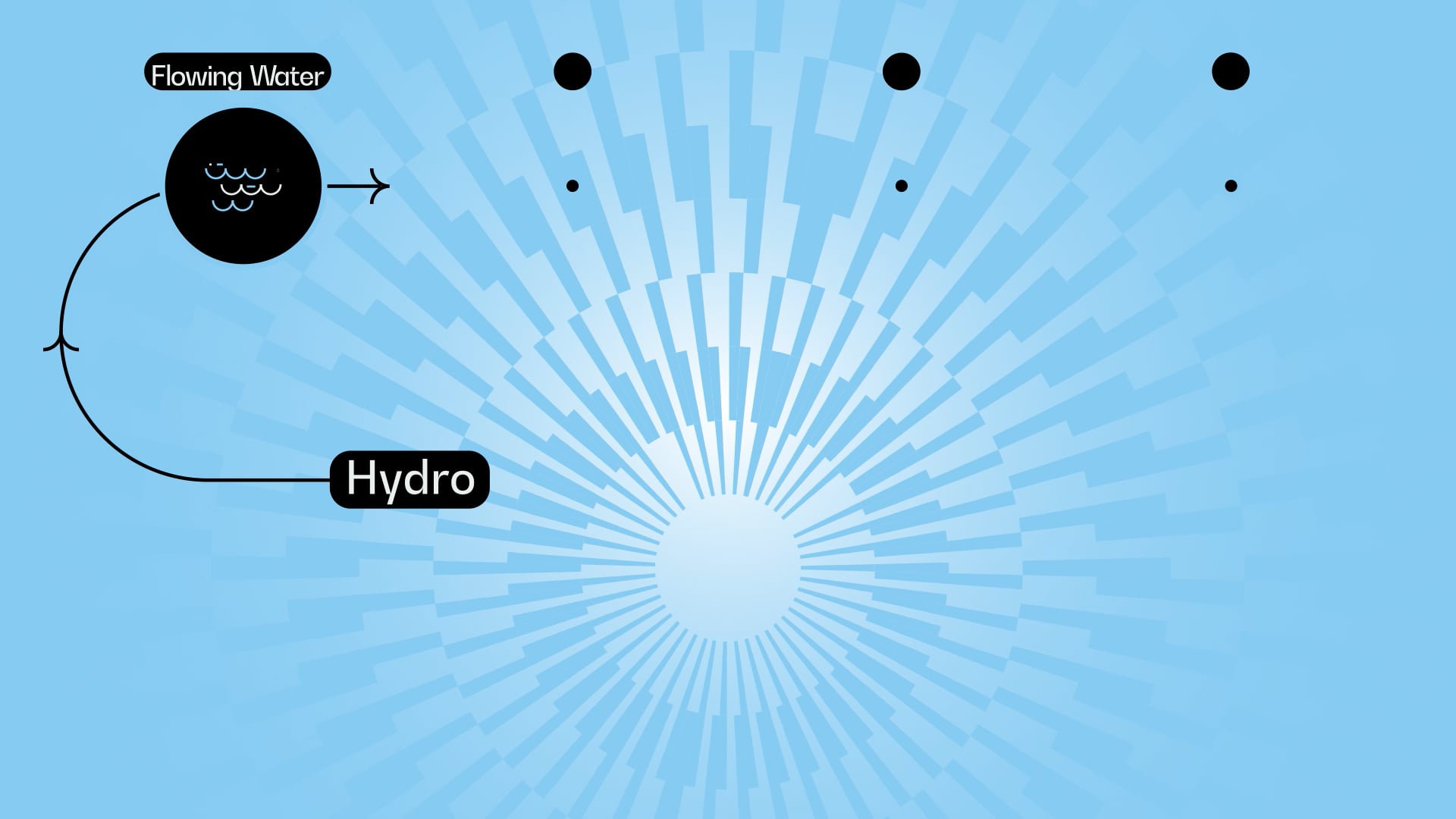
Hydroelectricity is reliable, relatively inexpensive to operate, and mostly free from CO2 emissions during operation—but it does have some drawbacks. Historically, dams across Canada were often built without consultation of Indigenous communities, creating negative impacts on their ancestral lands. Fish and other river species, like eels, can have their habitats disturbed, and some species are unable to reach their breeding grounds where dams divide the waterway.
And, although easily paid for over time based on the low operating costs and the assets' long lifespan (many dams in Ontario are over 100 years old), the initial costs of building a hydroelectric station are a high upfront investment. There is also the risk of future changes to water flows, including droughts caused by climate change, which could reduce water levels and impact hydroelectric power output. Still, even with these challenges, experts agree that hydroelectricity will continue to be an important part of the electricity mix for future generations.
Hydroelectric Generator
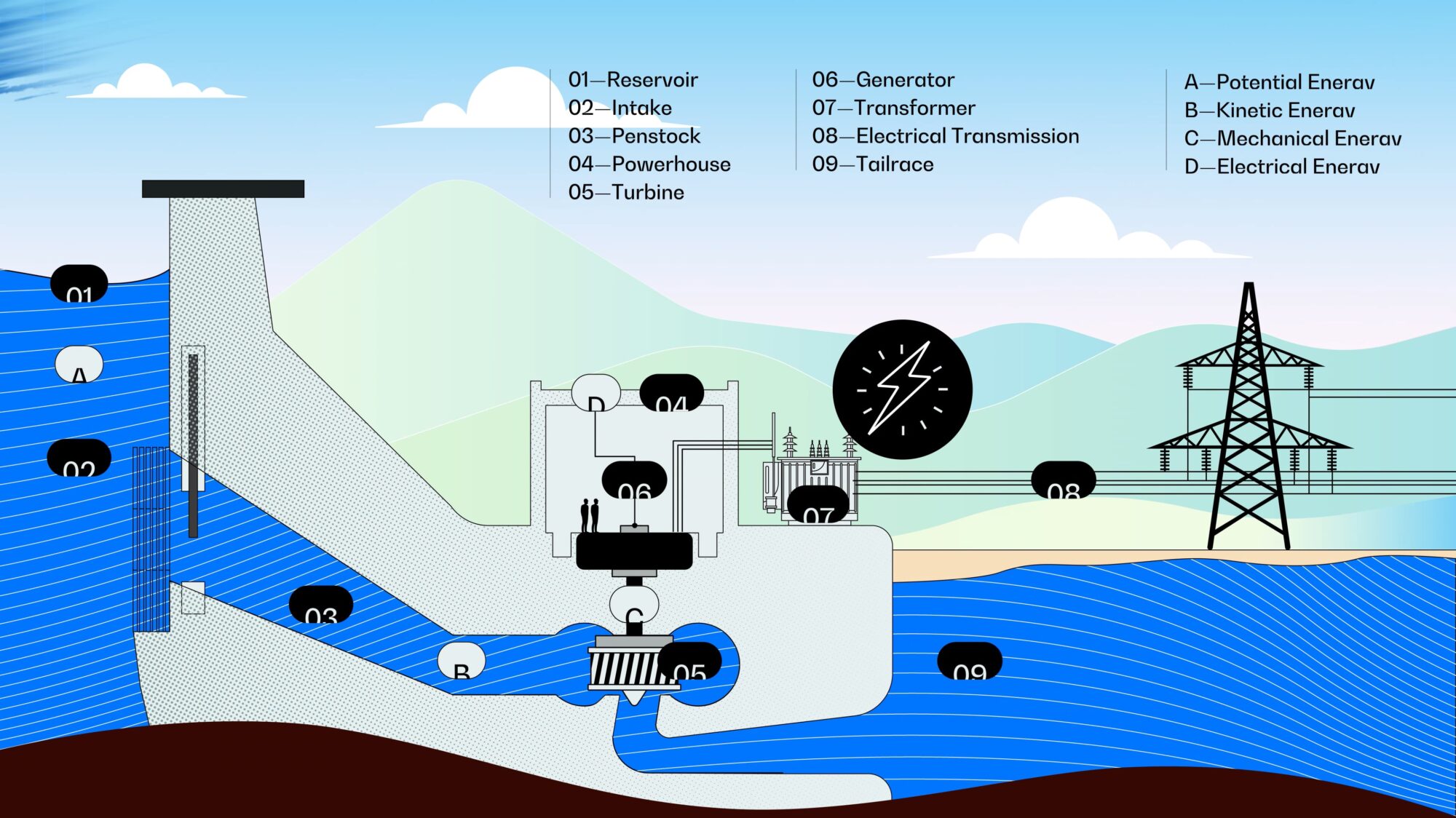
WATT NEXT:
Modernization & Refurbishment

Over 40 of the 224 waterpower facilities operating in Ontario are over 100 years old. OPG operates 66 hydroelectric generating stations and 239 dams on 24 river systems.
To continue to generate renewable, low-carbon, and low-cost power at these sites, OPG is upgrading and optimizing its existing facilities and their components to meet emerging demand as the province continues to electrify. Station refurbishments to modernize facility infrastructure, improve existing generating capacity, uncover additional efficiencies, and in some cases, redevelop the entire site, are some of the redevelopment and optimization opportunities.
WATT NEXT:
More Waterpower
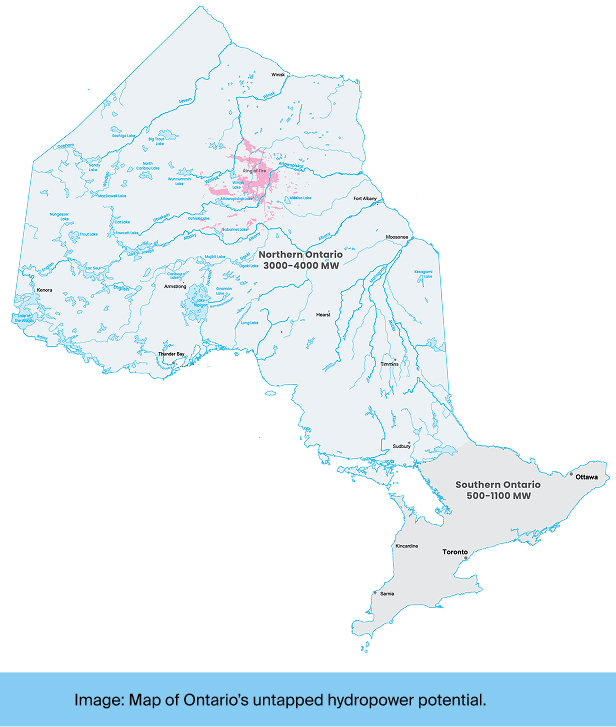
It is estimated that some yet unused waterways could provide over 4,000 MW worth of new capacity for our power grid in Ontario—enough electricity for about 4 million homes in addition to today’s 8,800+ MW of hydroelectric power capacity.
Building hydroelectric generating stations in all these places will require careful environmental planning as well as partnerships with the Indigenous communities who share many of these waterways. OPG already operates some of its hydroelectric stations in partnership with Indigenous communities on their lands and territories and plans to continue these important partnerships while also forging new ones.
WATT NEXT:
Fish-friendly Focus

With over 100 years of experience, there is a growing body of knowledge about how hydroelectric power plant installations affect wildlife.
Water temperature changes and impassable barriers can cause problems for native species. Environmental assessments and monitoring of all installations, new and old, watch for indications of problems that need to be addressed.
In Ontario, fish ladders have been installed in some dams. These sloping, stepped passages, sometimes shaped with boulders and other natural structures, provide the fish with a detour to swim or jump upstream, bypassing the dams to return to breed.
Many fish ladders have become tourist attractions, like the one in Corbett’s Dam that has an underwater camera and a sensor that counts the fish. People visit every weekend from mid-August to early October to watch the 5,000 to 10,000 chinook and silvery coho salmon swim from Lake Ontario up the Ganaraska River that runs through Port Hope on their way to their home spawning grounds.
It also includes other important species like American eels. OPG’s Saunders eel ladder is a specially designed structure that helps migrating American eels bypass the Saunders Dam on the St. Lawrence River, supporting the recovery of this threatened species by allowing thousands of eels to safely reach their upstream habitats each year.
Natural Gas
Over the course of millions to hundreds of millions of years, heat and pressure transform decaying plant and animal matter buried deep in sedimentary rock layers into solid, liquid or gaseous hydrocarbons—organic chemical compounds made of hydrogen and carbon—including crude oil, raw natural gas, and coal.
Deep wells are drilled to extract the raw natural gas, which is made up of varying amounts of hydrocarbons—mostly methane but also ethane, propane, butane, and pentane as well as nitrogen, carbon dioxide, hydrogen sulphide, helium, and water.
Methane, ethane, propane, butane, and pentane are referred to as natural gas liquids (NGLs). Most of the NGLs and other components are removed, with NGLs being sold and used separately. Methane trapped in underground coal seams, referred to as coal bed methane (CBM), can also be collected and used as natural gas.
Natural Gas Formation
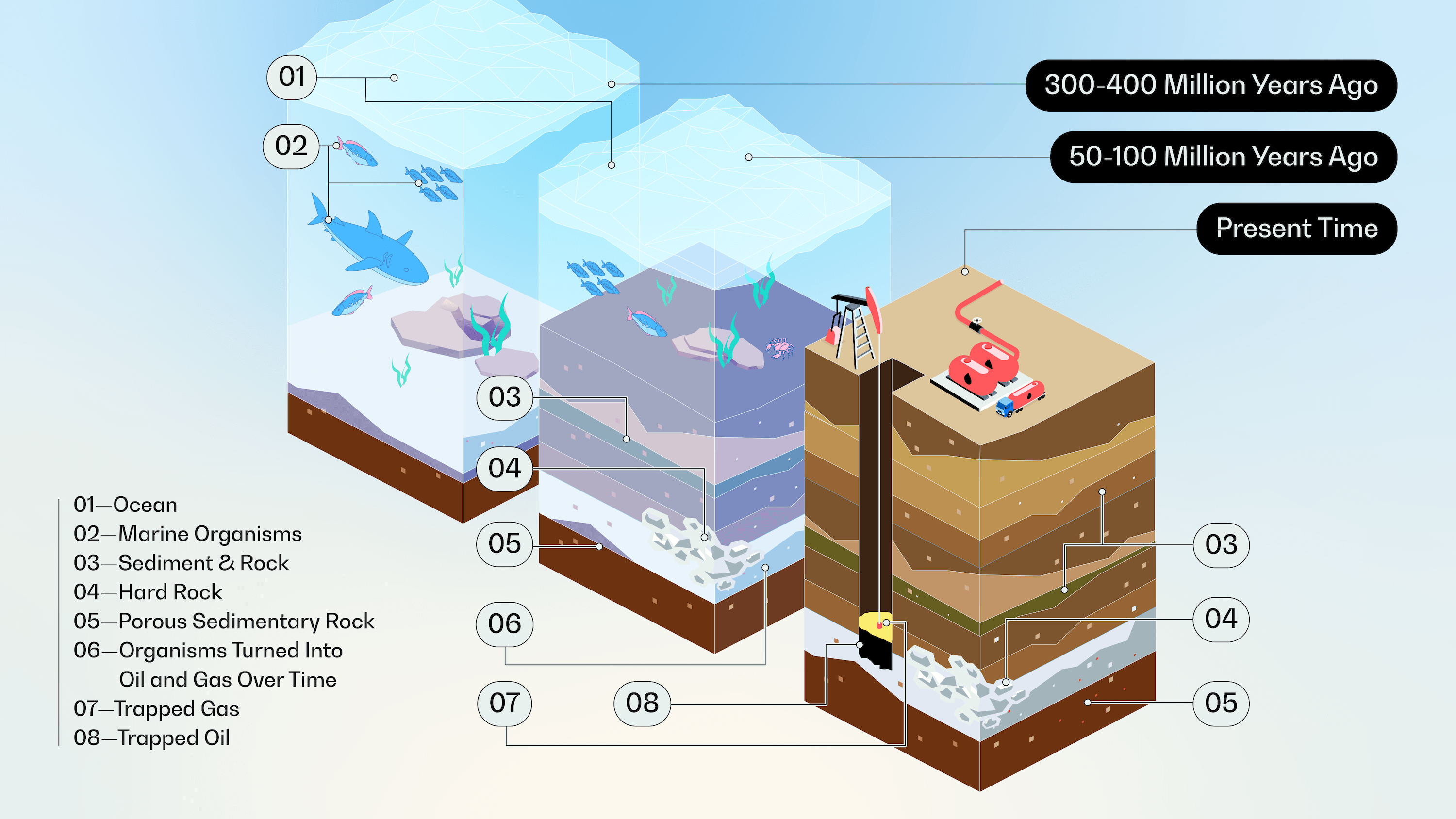
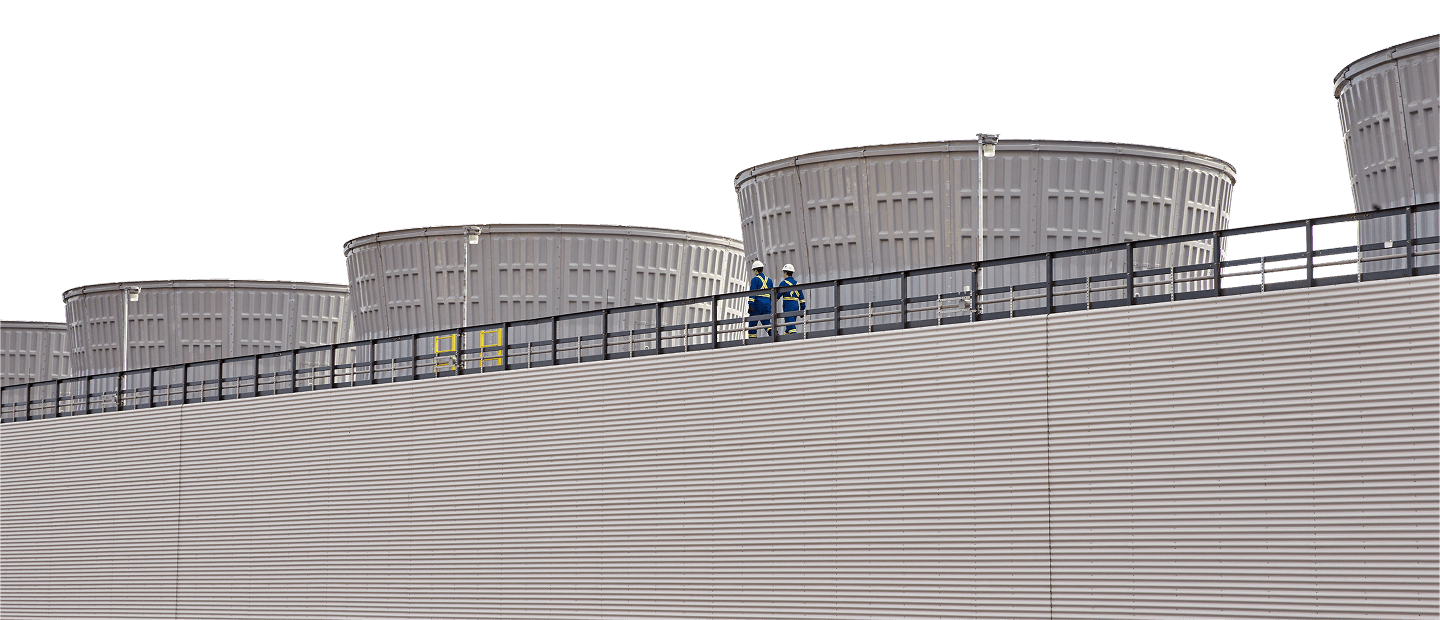
In Ontario, natural gas has produced about half as much electricity as hydroelectric generating stations in recent years. However, the capacity of natural gas generating stations are presently greater than hydro.
This is very important to avoid power outages. Natural gas usage can greatly fluctuate to match needs due to changes in weather that also reduce or increase availability of wind and solar power. And Ontario’s use of natural gas will need to increase to make up any shortfall as nuclear power generators are closed for refurbishment and as new clean generation sources are developed. It is used widely for cooking and for heating homes across the province and country, and it also plays an important role in the electricity mix as a reliable energy source. It’s important to have quick-to-respond natural gas generating stations available to support the grid when electricity demand suddenly spikes and when intermittent sources like wind and solar are under-contributing.
Ontario stopped using coal to fuel generating stations in 2014 as part of the Ending Coal for Cleaner Air Act. Cleaner natural gas, which releases 50% less carbon dioxide (CO2) into the atmosphere than coal, continues to be a reliable energy source for our province.
How Natural Gas Generates Electricity
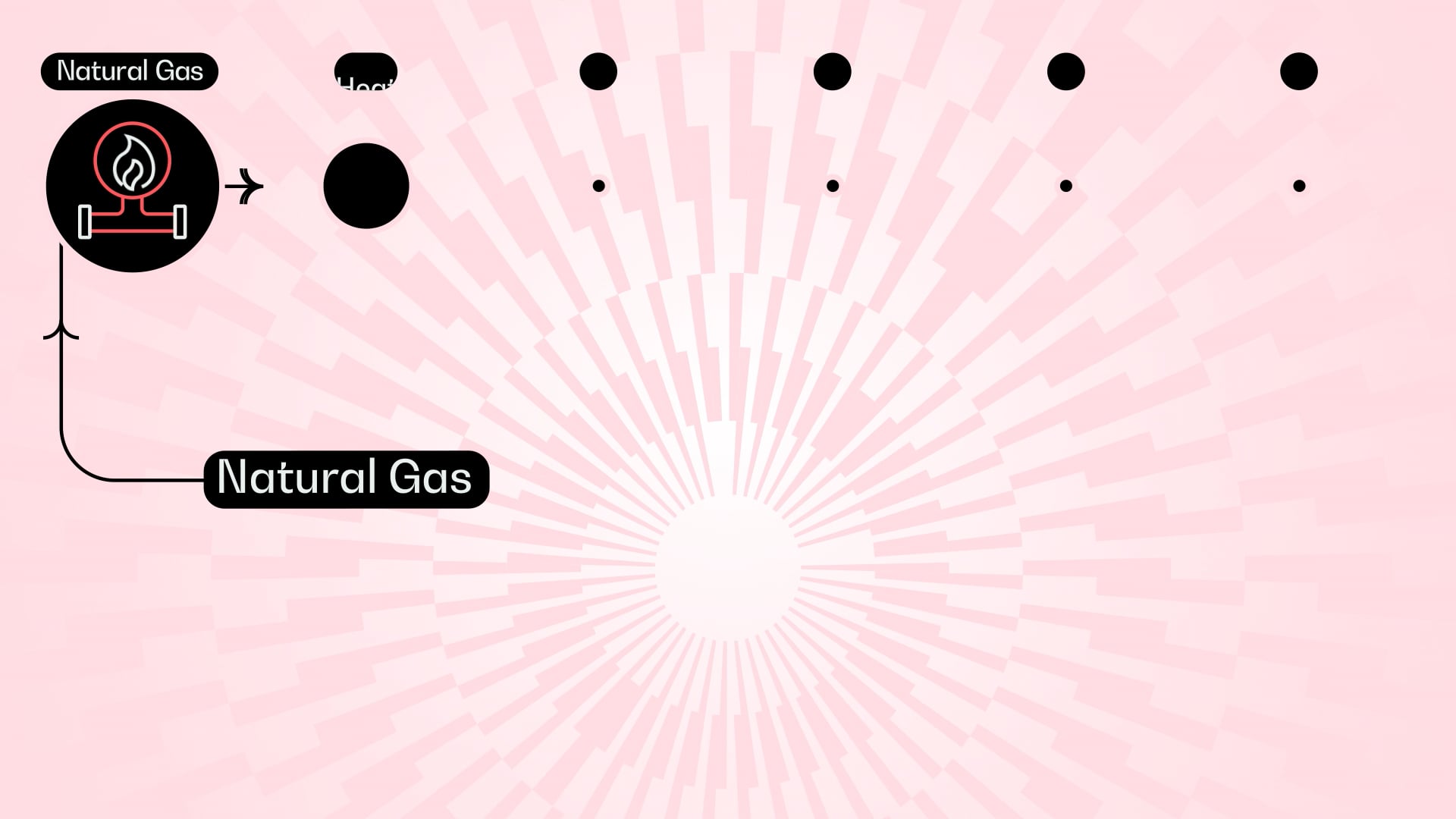
There are two methods, and both involve combustion. Natural gas has energy—made up of mostly methane, it releases a lot of heat when it burns. This heat can be used to boil water to create high-pressure steam.
Expanding steam is used to spin a turbine attached to a generator that produces electricity. This process is referred to as an external combustion cycle. Combustion is the name for the chemical process in which something reacts rapidly with oxygen and gives off heat—simply put, it burns. External refers to the fact that the fuel is burned outside of the process which drives the turbine. In this type of generating station, it is possible to use a dual-fuel boiler that can burn a fuel other than natural gas, such as oil.
Combined Cycle Natural Gas Generation
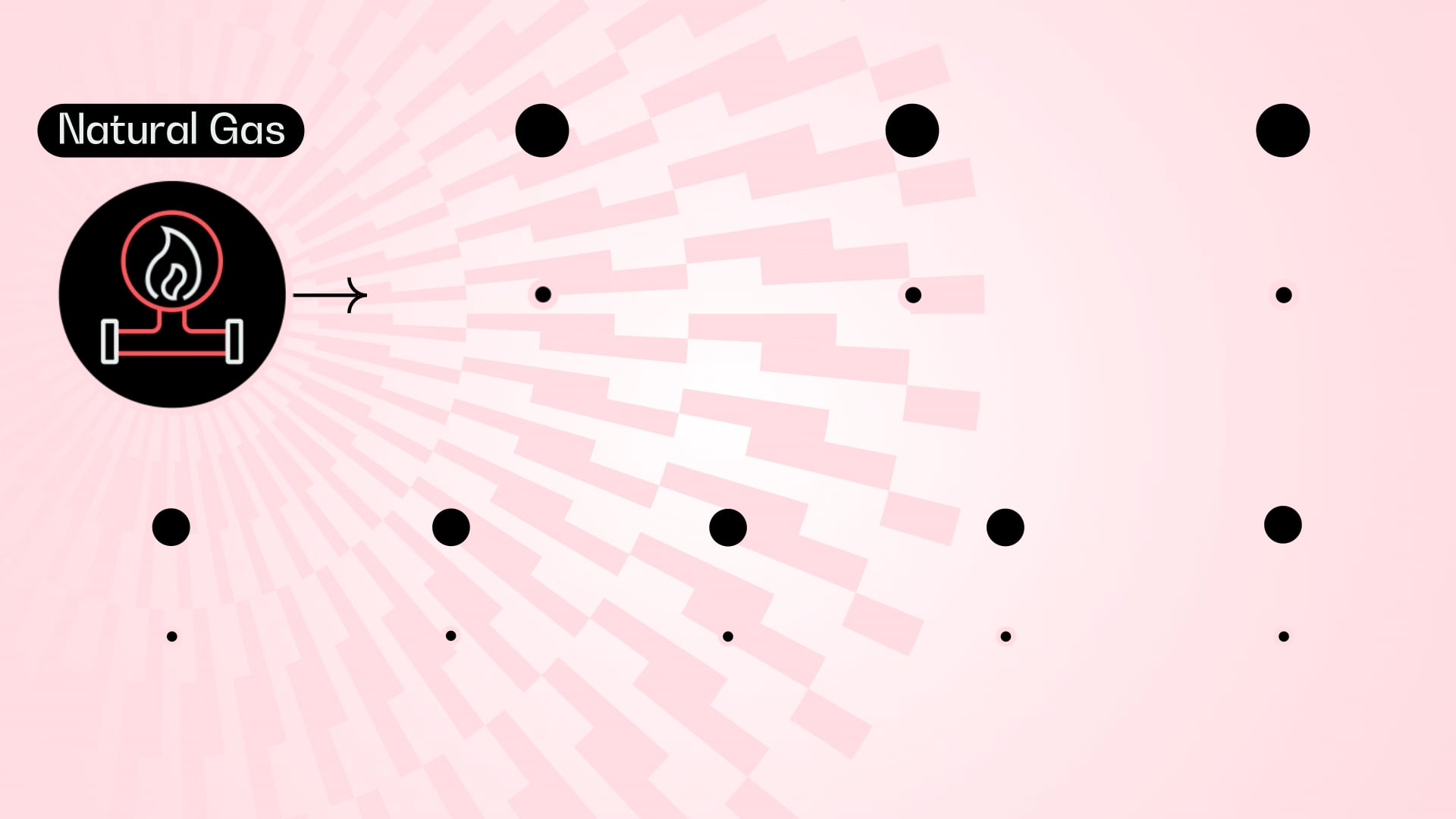
There is a second, more efficient method of using the energy of natural gas. Called a combined cycle gas generating station, it combines an internal combustion cycle with an external combustion cycle, and there are two steps:
- First, the natural gas is burned within its own turbine. This runs like the internal combustion engine of a jet plane: once ignited, the hot expanding gases turn the blades of a turbine, which turns a generator to make electricity.
- Second, the hot exhaust gases from this turbine are used to boil water and create high-pressure steam that turns the blades of a second turbine, which also turns a second generator to make electricity.
Natural gas generating stations are quick to respond and essential to account for fluctuating demands—even though CO2 emissions remain one of their greatest drawbacks.
WATT NEXT:
Low-Carbon Hydrogen and Renewable or Synthetic Natural Gas
Both low-carbon hydrogen and renewable natural gas (RNG) can be blended into natural gas-fired electricity generation facilities to help lower net carbon dioxide.
Ontario has already started hydrogen and RNG projects in municipalities across the province including, but not limited to, London, Ottawa, Toronto, Markham, Hamilton, Ilderton, and Niagara Falls. With an electricity grid that is almost 90% carbon emissions-free, Ontario is in a good spot to support the production of low-carbon hydrogen.
OPG’s Atura Power is developing the Niagara Hydrogen Centre, set to be Ontario's largest green hydrogen production facility. Located in Niagara Falls, this 20MW facility will use electrolysis technology to split water into hydrogen and oxygen. And the entire process is powered by the clean energy generated by the nearby Sir Adam Beck hydroelectric station.

RNG is fully interchangeable with conventional natural gas. It is mostly methane, produced by decomposing organic matter. It can be collected from waste facilities, sewage treatment plants, and green bin programs.
Stanton Farms in Ilderton is Ontario’s first agriculture-based RNG supplier. It produces more than 3 million cubic metres of RNG each year from the bio-digestion of their cows’ manure (bacteria digest it in large vats, and then the gas is collected and refined). Stanton Farms can annually divert 60,000 tonnes of organic waste from landfills and capture 11,000 tonnes of methane, preventing this greenhouse gas from being released into our atmosphere.
Synthetic Natural Gas (SNG) is a pipeline-quality gas that is produced through the Sabatier process—a chemical reaction in a high temperature reactor in which methane and water are produced from hydrogen and carbon dioxide. If low-carbon hydrogen is used, SNG can also reduce the carbon intensity of the natural gas system—but more efficient ways to create SNG are needed to make this option more viable.
Wind

The kinetic energy in wind can be converted into useful forms of energy, like mechanical or electrical. For centuries, wind power has been used to move sailing ships, turn grist mills, and pump water.
Today, wind power is used for even more, generating electricity for homes, farms, and small businesses.
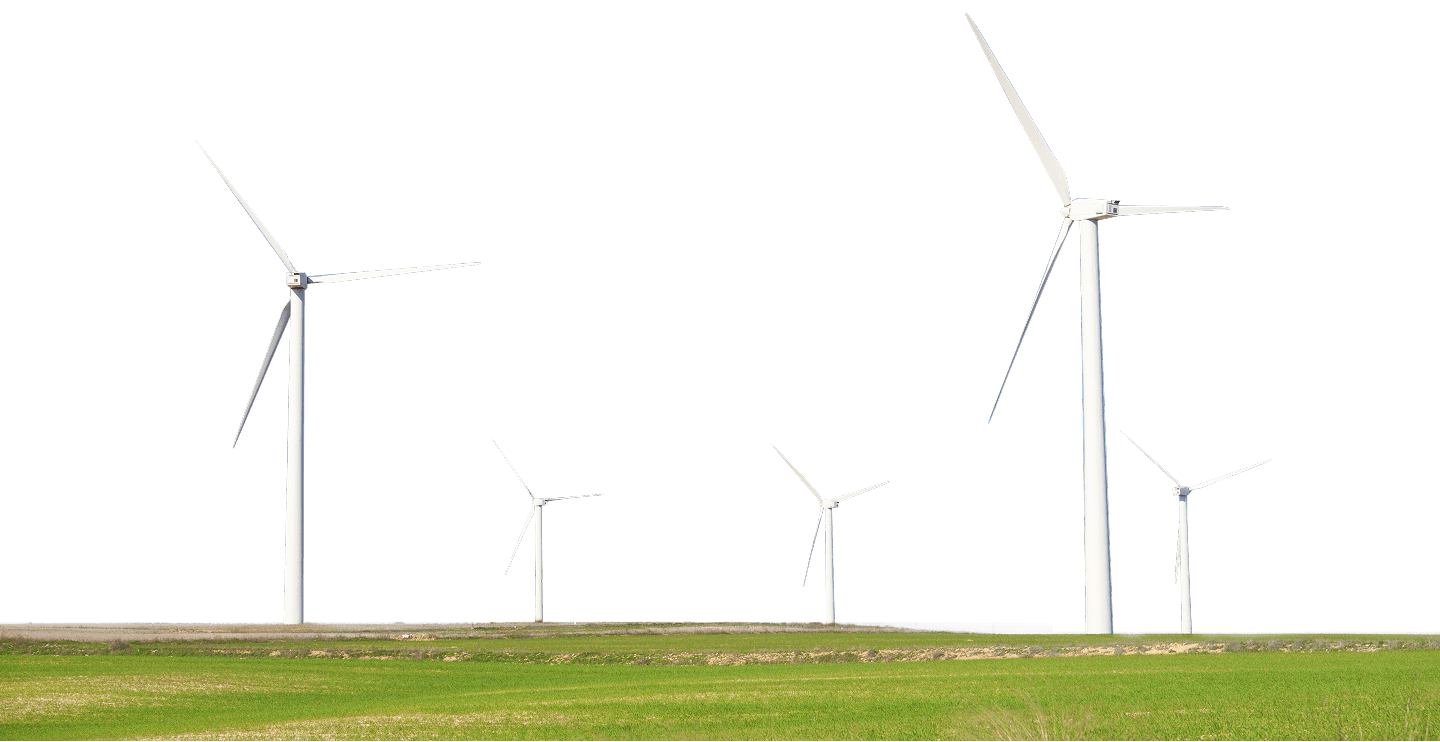
Over the past few decades, we have seen a real boom in the construction of large wind turbines and in the amount of electricity contributed to the grid.
Large wind farms with multiple turbines are popping up in areas chosen for their consistently high winds.
In 2023, just over 8% of the total electricity generated for Ontario’s grid was by wind power, which represents enough power to run nearly 1.3 million homes that year.
How Wind Generates Electricity
Wind is flowing air and flowing air has energy. Some of that energy turns the blades of a turbine attached to a generator, producing a flow of electricity.
As the direction of the wind changes, the turbine changes its orientation—like the sail of a ship—so that the blades will always catch the wind in a way that makes them turn.
How a Windmill Generates Electricity
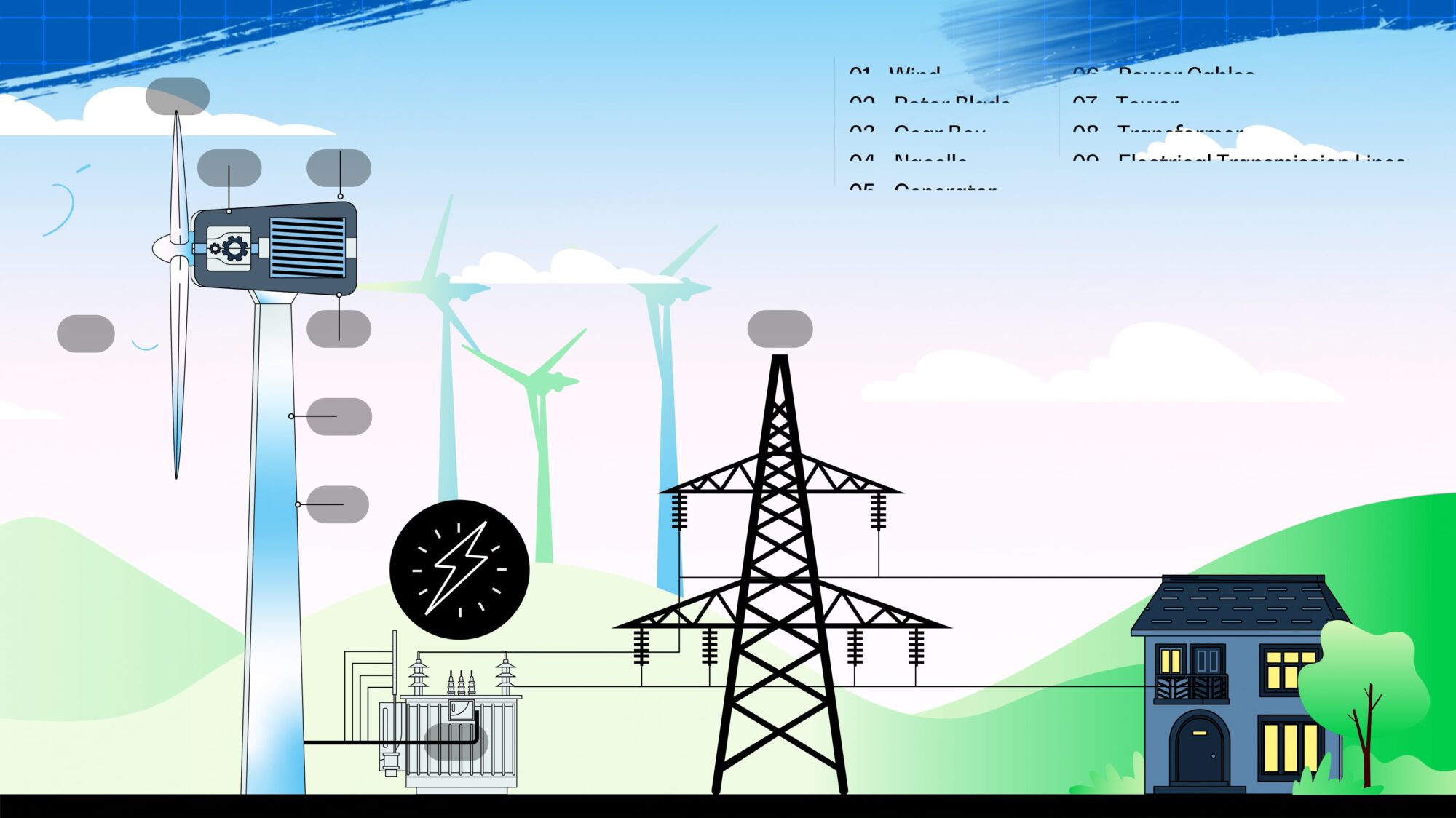

Unfortunately, the wind does not blow consistently. Winds are much higher in the winter months than in the summer.
In Canada, for example, the amount of electricity generated by wind in November is double the amount generated in August. Winds are also higher during mid-day than in early morning and evening when demand is highest. And in really strong winds, the turbines need to be shut down to prevent them from getting damaged.
All turbines vibrate, make noise and have dangerous moving parts, but wind turbines being out in the open have special challenges for birds, bats and people, adding to the concerns about where we place them.
The large rotating blades of a wind turbine can start up, slow down, or speed up with the changing wind. This makes it hard for birds and bats flying by to avoid them. Besides being hit by the blades, quick changes in air pressure as the wind moves over the blades can create barotrauma – sometimes fatal damage to a bat’s lungs if they fly too close. Because of these concerns, there is ongoing monitoring of current wind turbines in Ontario, and guidelines for any new projects including positioning them to avoid bird and/or bat migratory paths.
Also, as the blades pass through the air there is aerodynamic noise adding to the mechanical noise and vibrations from the internal components. Although measured noise levels are below what is known to directly impact human health, some people still find them annoying or disturbing. Impact on other animals is still not clear, but may result in many species avoiding the area, reducing habitat for eating, resting and breeding.
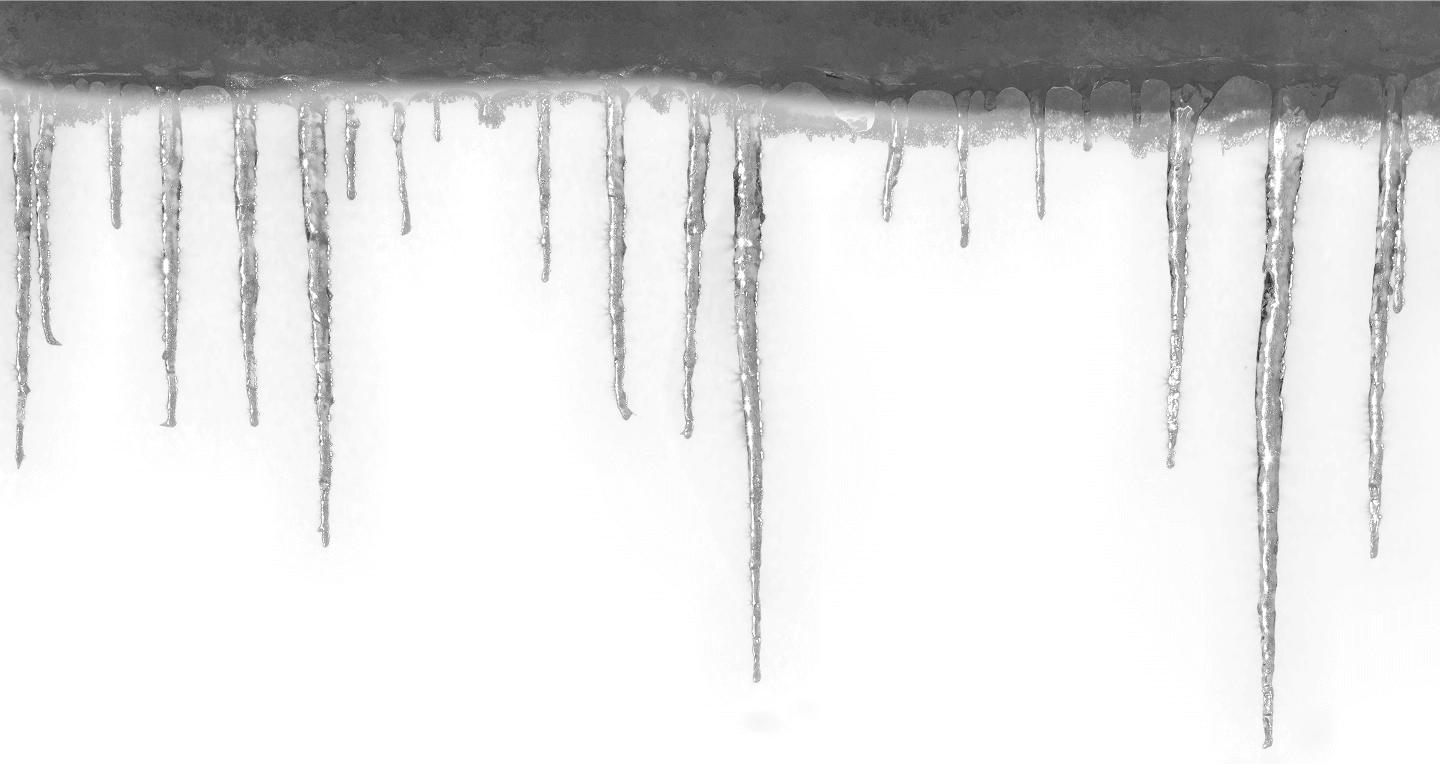
The cold climate in Ontario can also mean shutdowns or reduced access for maintenance during winter months.
Ice buildup on wind turbine blades, for example, can cause significant damage or equipment failure. A high rate of repair and replacement to blades and other parts can mean many composite materials end up in landfills, adding to the list of drawbacks. Like solar energy, wind power will benefit dramatically from the development of large-scale storage systems that will allow the electricity to be used when it’s needed, not just at the time of generation.
Larger Turbines = More Electricity
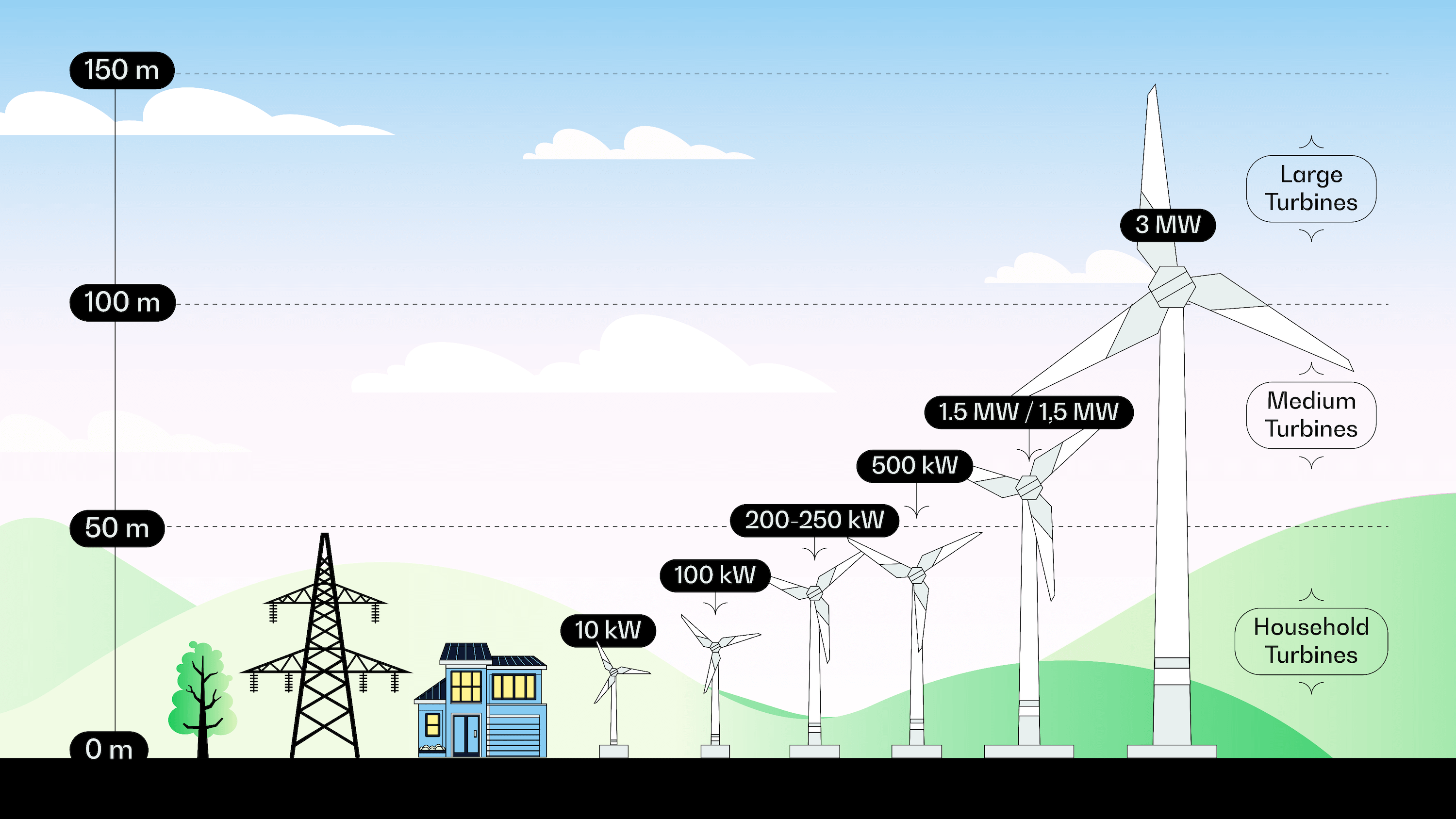
With turbines, bigger size equals bigger electricity generation.
A taller tower with longer and larger turbine blades means a larger sweep area which produces more electricity than a smaller turbine. So turbines have been growing in size to maximize efficiency. The world’s tallest turbines are over 200 metres tall.
WATT NEXT:
Locating New Wind Farm Sites
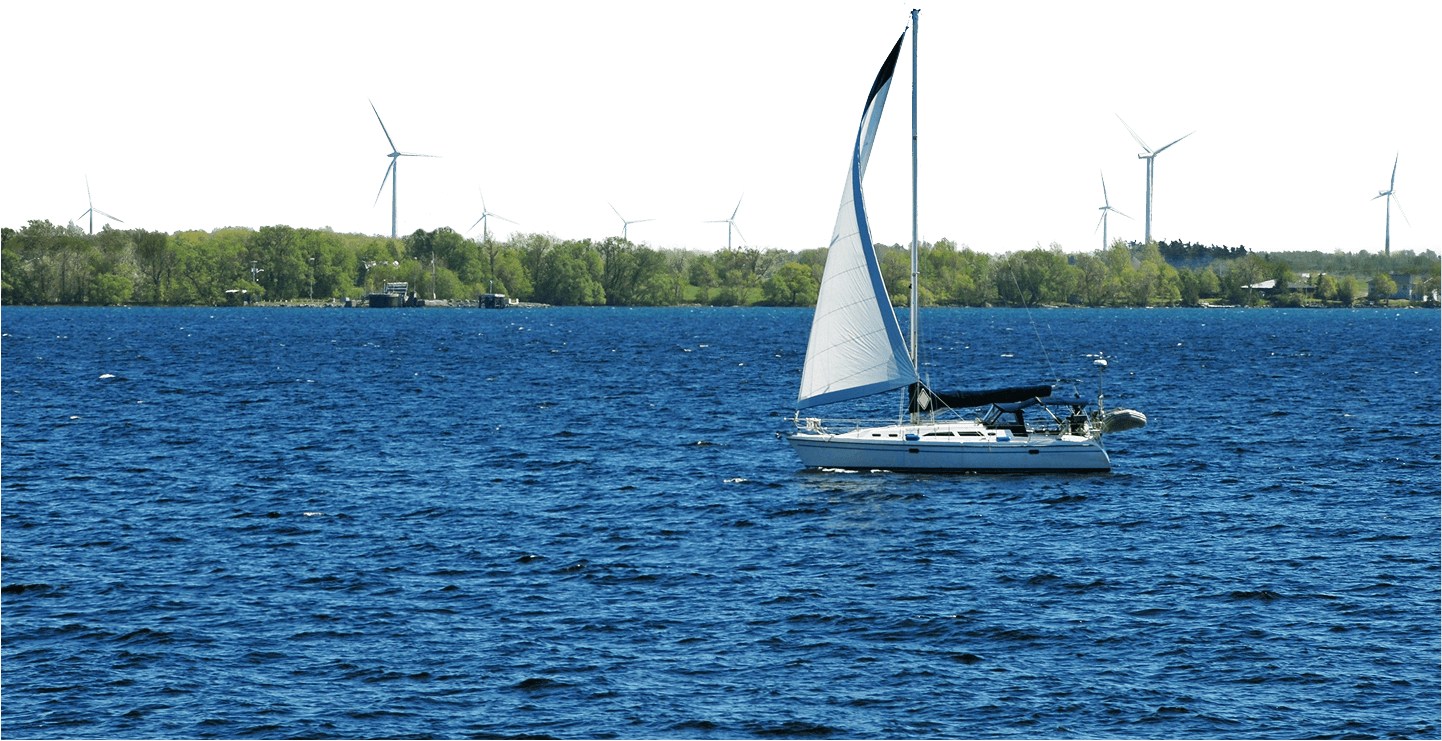
Wind power is restricted by geography. Land is limited. Finding locations suitable for wind turbines is challenging. Many nations and regions that neighbour oceans and seas make use of offshore wind farms, where winds are more consistently higher than on land.
Ontario does not neighbour an ocean, but we do have Great Lakes. The Wolfe Island Wind Project near Kingston, Ontario is an example of how to creatively work with geography. The now-running project (as of 2024) has 86 wind turbines in operation with a capacity of 198 MW—enough to power about 198,000 households.
SOLAR
![light-burst-shutterstock_2560108343_Sun [Converted] 1 light-burst-shutterstock_2560108343_Sun [Converted] 1](https://wattnext.ca/wp-content/uploads/2025/07/light-burst-shutterstock_2560108343_Sun-Converted-1.png)
The ultimate renewable energy resource? It’s right above us—sunlight! Solar energy is energy from the sun in the form of radiated heat and light.
The sun’s radiant energy can be used to provide light and heat for buildings, and to produce electricity. Historically, solar energy has been harnessed through passive solar technologies, meaning without electrical or mechanical equipment. But the advancement and availability of solar photovoltaic (PV) technology in recent years has provided us with the means to convert sunlight directly into electricity.
How Sunlight Generates Electricity
Sunlight—like all light—is streaming waves of photons. And photons have energy.
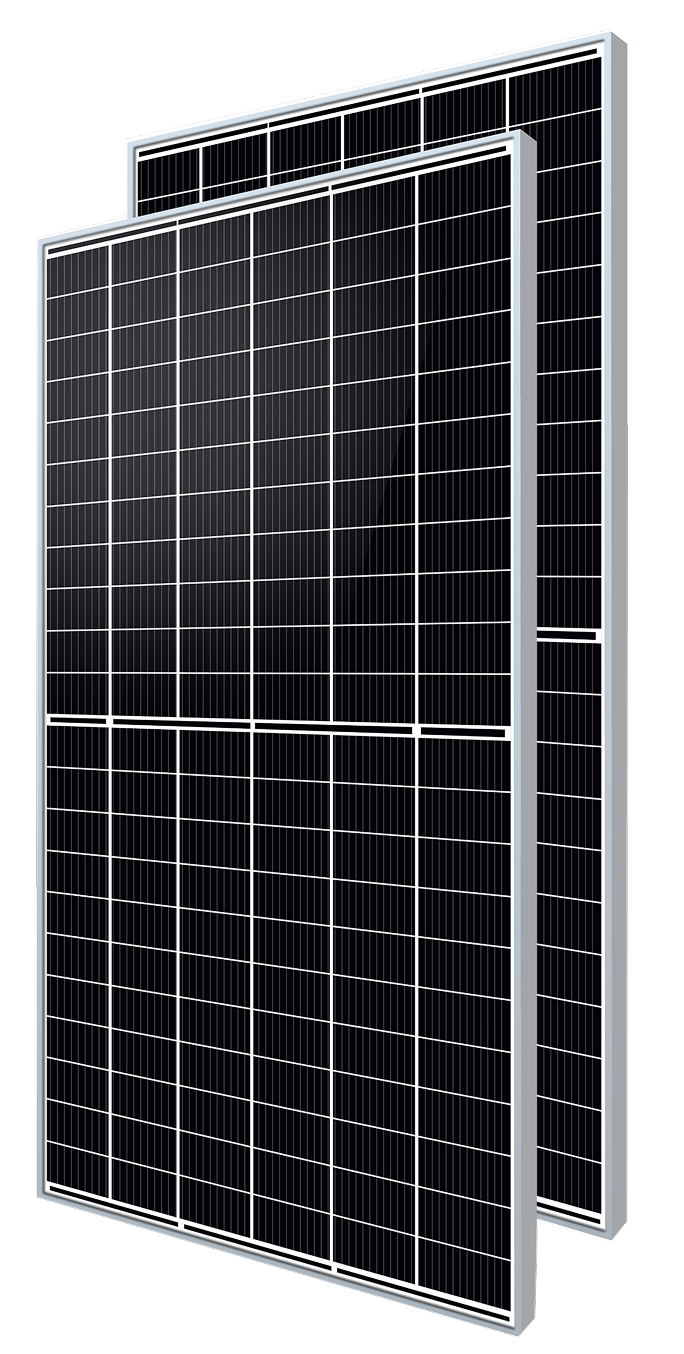
A photovoltaic (PV) solar cell is made from specially selected materials that react to the light. No need for spinning magnets to move the electrons. Some of the energy of the sunlight can energize electrons in these materials directly—to get them moving and generating electricity.
This flow of electrons generated then needs an extra step of a solar inverter—an electronic device that converts it from DC (direct current) to AC (alternating current), the type of current that can be fed into the grid.

How Sunlight Generates Electricity
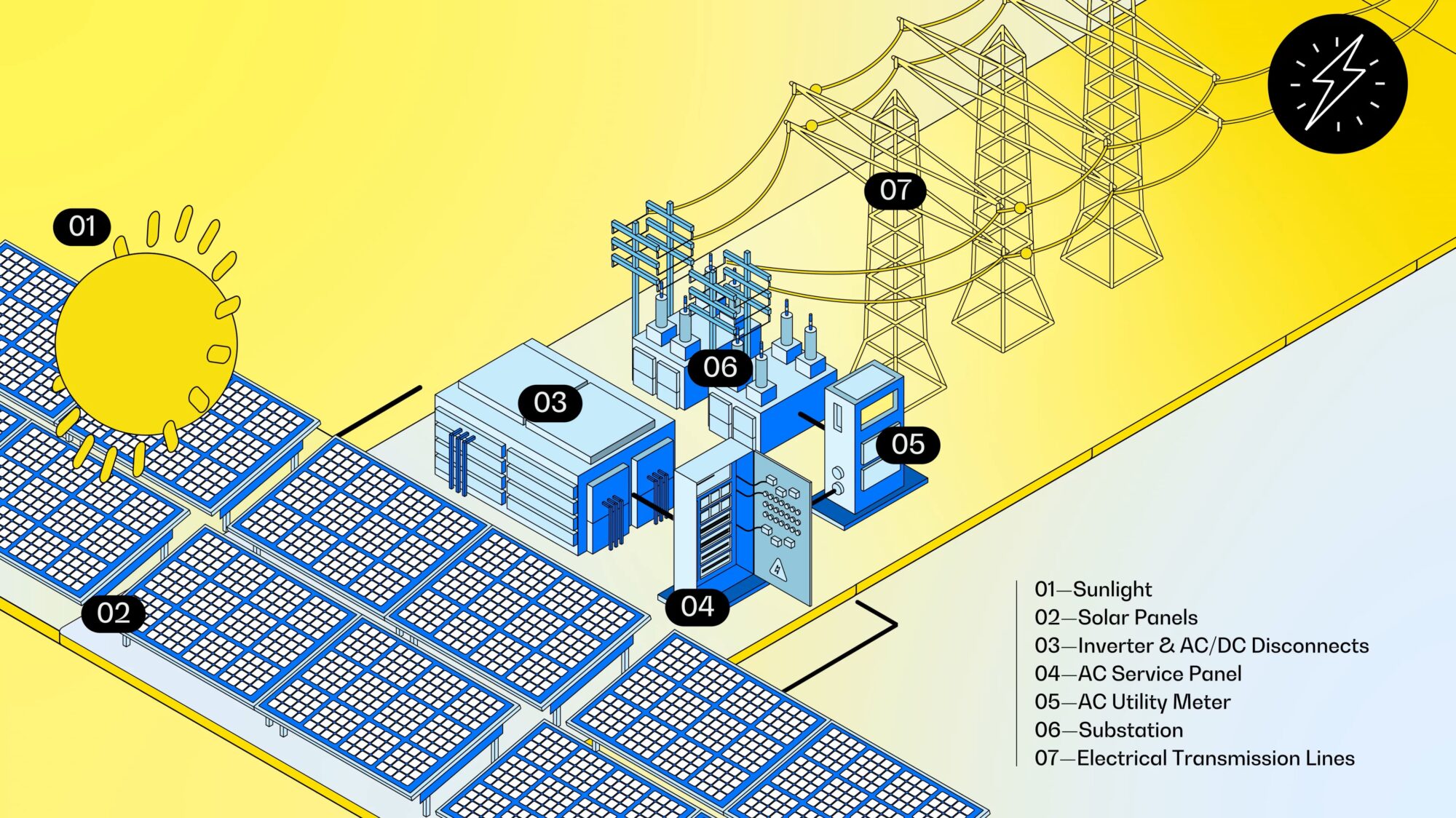
Solar can be harnessed only during the day and only if the sunlight is bright enough. PV panels drop in output when blocked by clouds, buildings, snow cover, or other obstacles.
Solar energy is particularly valuable in summer months on hot, sunny days, when it can help off-set increased air conditioning use and reduce strain on the electricity grid.

The more solar PV cells that can be combined, the greater the electricity output. Many PV cells are grouped together to create standard sizes of PV panels.
A few PV panels on a roof might help ease a residential electricity bill while a large field of industrial scale PV panels could power a small community.
Average Annual Hours of Sunshine in Some Canadian Cities

Some areas of Canada are seriously sunny and others not so much. Alberta and Saskatchewan lead the way with some of their cities receiving more annual hours of sunshine than cities like Rio de Janeiro or Melbourne in the southern hemisphere.
Our northern territories in Canada get very little sun during the winter months, making it challenging to depend on solar generation year-round. A year’s worth of sunshine in Ontario accounted for less than 1% of electricity added to the power grid in 2023.
Like wind power, solar PV technology will benefit dramatically from the development of large-scale storage systems that will allow the electricity to be used when it’s needed, not just at the time of generation.
Another major drawback? Solar PV panel efficiency drops over time and frequently needs to be replaced. The panels can contain small amounts of toxins, like lead and cadmium, which means they require special waste management processes when they break or fail.
WATT NEXT:
Locating New Solar Sites and PV Materials

Solar power is even more restricted by geography than wind power. Land is limited. A recent success story is the Nanticoke solar facility.
At a decommissioned coal station, OPG built a new solar generating facility in partnership with Six Nations of Grand River Development Corporation and Mississaugas of the Credit First Nation. The facility, with 192,431 PV panels installed at this single site, can generate 44 MW of clean, renewable power for the province—enough to power a small town.
Looking ahead, new materials might make the PV panels themselves more efficient. In today’s PV technology, only a small fraction of the energy in sunlight is converted to electricity. Researchers across the world in universities and laboratories have been busy making progress, so it might just be a matter of time before solar power becomes far more effective.
BIOMASS

Biomass is biological material—recently-living organic matter—and is considered a clean and renewable source of energy. Ontario has many potential sources of it:
- Discards from pulp and paper manufacturing
- Residual materials from forestry
- Waste matter from agriculture
- By-products from food processing
- Waste from municipal landfills, compost, and water treatment facilities
Though less than 1% of the grid, biomass is currently the 6th largest source of electricity in Ontario.
Biomass fuels, or biofuels, can be grown, gathered and refined in a consistent, renewable fashion.
Sawmill waste, logging residue, discarded trees, and forest fire salvage wood tend to be key biofuels for adding power to the grid in Ontario. These can be pressed into wood pellets and used as fuel, just like firewood.

Biomass fuels, such as wood pellets, have energy—like natural gas. And like natural gas, wood pellets release a lot of heat when burned.
This heat can be used to boil water to create high pressure steam. The expanding steam then spins a turbine attached to a generator to produce electricity. This external combustion cycle is the same process used to generate electricity from natural gas.
How Biomass Generates Electricity
Unlike wind and solar, biofuels are a consistently available source of electricity helping ensure the grid is always functioning at peak efficiency.
While a drawback to biofuels is that burning them does release carbon dioxide (CO2) into the atmosphere, it is the same CO2 that was taken from the atmosphere as food by the organic matter, like trees and crops, that was then turned into the biofuel.
Coal, oil, and natural gas release CO2 that was captured millions of years to hundreds of millions of years ago, causing a net gain of CO2 in today's atmosphere. In contrast, biomass that is sustainably farmed can produce renewable, low-carbon fuels.
Carbon in the Biomass Energy Generation Cycle
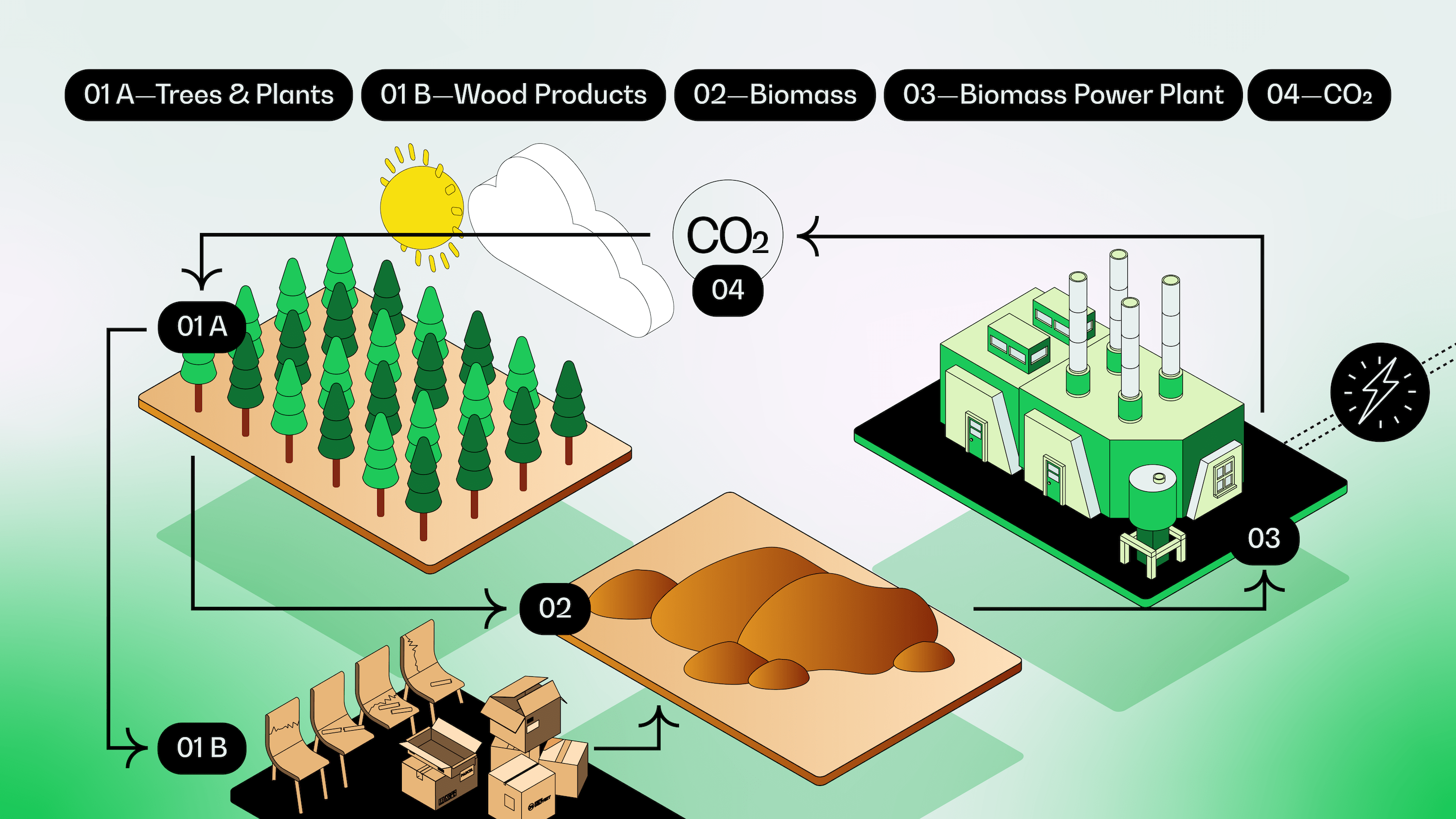
WATT NEXT:
Research and Repurposing
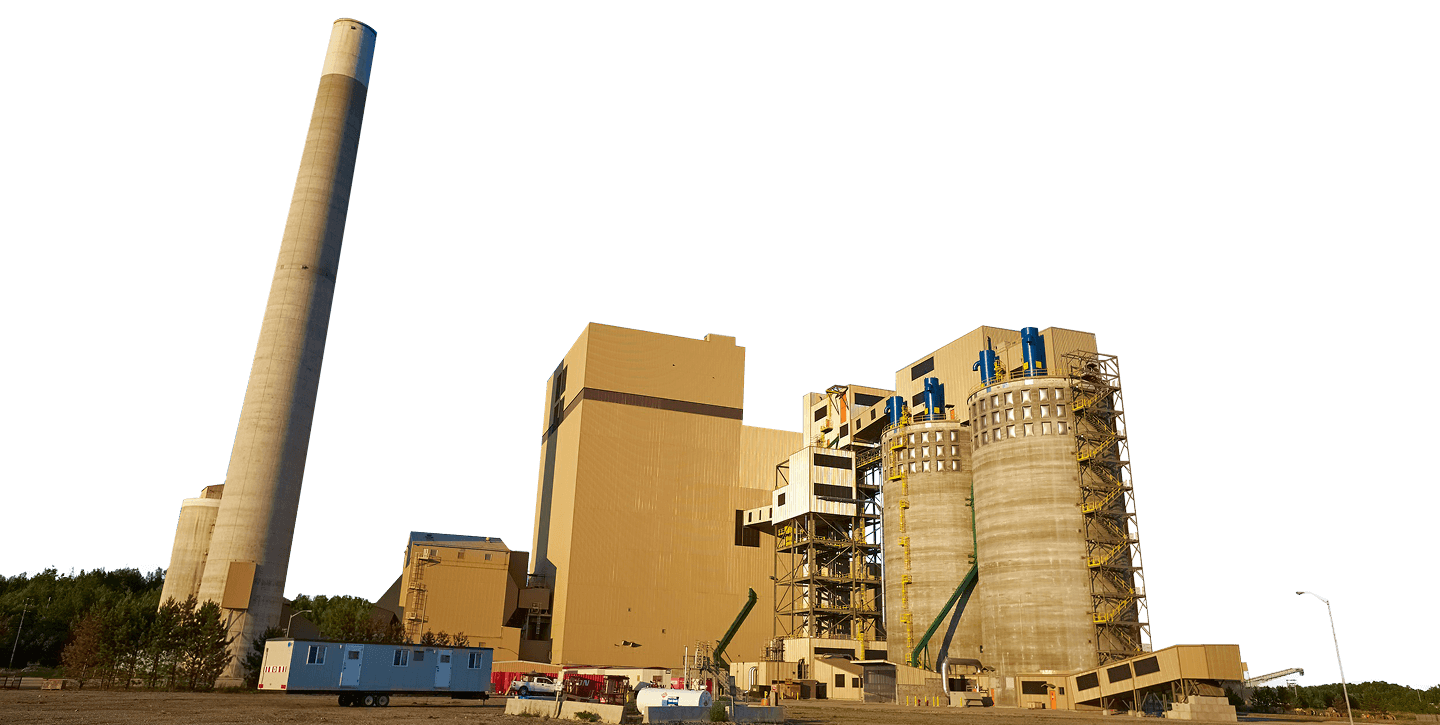
There are real advantages to using Ontario-sourced biomass residues to produce electricity in our province.
At the same time, more research is needed to further improve efficiencies and the decision-making process for when to use them. The Atikokan Generating Station is a recent example of research and repurposing done well. OPG repurposed this former coal generating station, converting it from coal to biomass as fuel. The station is now the largest 100% biomass-fuelled plant in North America, with a generating capacity of 180 MW—enough to power 180,000 homes.
Other biofuels being explored and used in Ontario include:
A pipeline-quality gas made from decomposing organic matter that, after processing, is fully interchangeable with conventional natural gas.
A renewable fuel made from various plant materials (often corn). Gasoline in Ontario is blended with ethanol at varying percentages to reduce the carbon intensity of the fuel and reduce air pollution.
A fuel made from fats and oils, such as soybean oil or canola oil, and is processed to be chemically the same as petroleum diesel. Renewable diesel can be blended with petroleum diesel, or it can completely replace it to reduce the carbon intensity of the fuel.
Like renewable diesel but not chemically the same as diesel, it is made from vegetable oils, animal fats and recyclable restaurant grease. It can also be blended with petroleum diesel in limited quantities.
Other Sources and Distributed Generation
There are currently no other sources of energy used to generate electricity for the grid in Ontario besides nuclear, hydro, natural gas, wind, solar and biomass.
Geothermal energy has one of the lowest carbon footprints of all energy sources.
In areas of the world where geothermal energy can be used to generate electricity, it is proving to be a clean and reliable source of power. Unfortunately for Ontario, we are not able to use it in this way yet. Using geothermal for electricity power plants requires high-temperature differential resources, which are typically found in areas with active volcanic activity or where the Earth’s crust is thinner, and these conditions are not common in Ontario.
Geothermal refers to geological— the Earth’s—heat. In its simplest form, geothermal heating and cooling is accomplished by sending heat to, or drawing heat from, an area of earth or body of water. Both water and soil are good at maintaining their temperature. At the right depth, you can have soil and/or water that is warm in the winter and/or cool in the summer and use it to warm up or cool off, depending on what you need at the time. This is how geothermal heat pumps work, which are being used commercially and residentially in Ontario and across Canada. To use geothermal energy to generate electricity, you need a lot more heat—and you need to drill deep into the crust of the Earth to find it.
How Geothermal Electricity is Generated
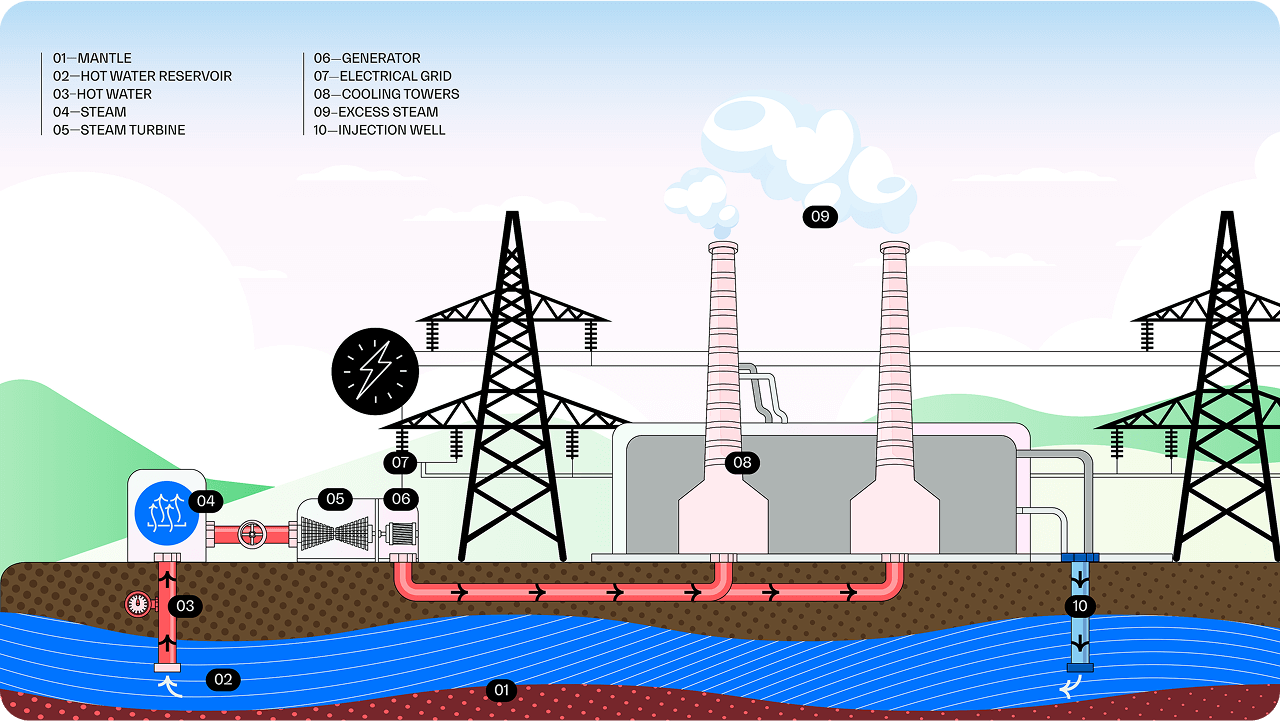
The core of the Earth is pressed into a solid sphere of mostly iron and nickel, estimated to be between 4,000°C and 5,000°C. That’s about 100 times hotter than the Sahara desert at the peak of summer! The further away from the core, the cooler it is.
The liquid mantle just below the crust of the Earth is about 700°C, and it ranges in thickness. The thin ocean crust can be as little as 3 kilometres thick, while the continental crust averages 70 kilometres thick—approximately equal to the highway length between Hamilton and Toronto. It is this thickness that poses the problem. We are only able to drill and bore deep enough to reach temperatures that are high enough for generating electricity in areas of the world where the crust is thin enough. Where this is possible, water will feed into and/or be pumped up from those deep boreholes and boiled by the Earth’s heat, creating high pressure steam. Expanding steam is then used to spin a turbine attached to a generator that produces electricity.
Inside Earth: The Crust, Mantle and Core
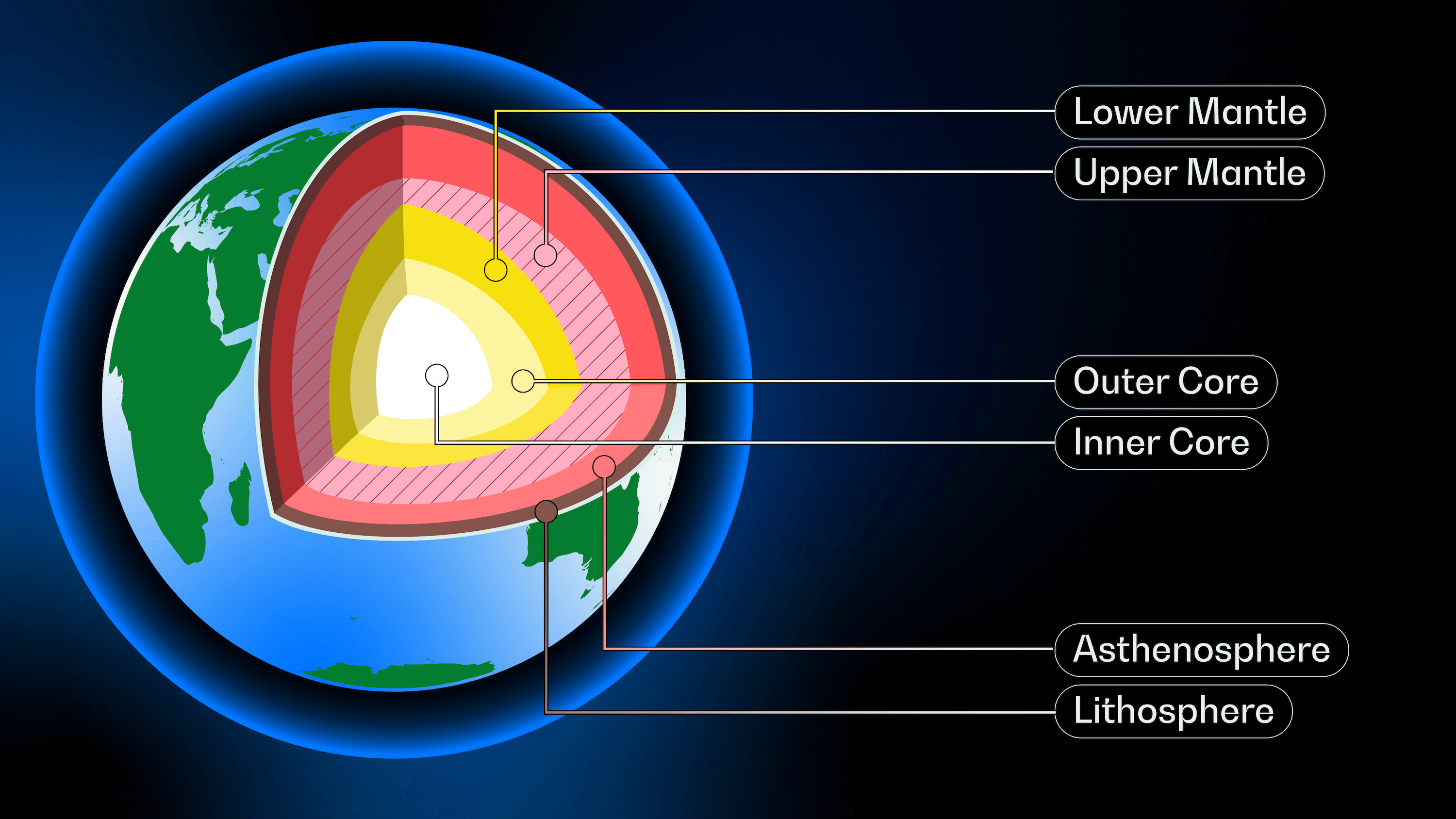
Ontario sits, for the most part, on the Canadian Shield—the largest mass of exposed Precambrian rock on the face of Earth. It is a poor location for geothermal electricity generation due to lack of data and limited boring options.
Geothermal resources with the highest temperature in Canada are located in British Columbia, Northwest Territories, Yukon, and Alberta. Further research and mapping are required before more exploration and action can be taken. In time, geothermal electricity could become a significant part of the mix. But it is not what’s next for Ontario.
Like oil and natural gas, coal releases carbon dioxide (CO2) that was captured millions of years to hundreds of millions of years ago, causing a net gain of CO2 in today's atmosphere.
Coal releases twice as much CO2 as natural gas—and coal-fired generating stations release over a hundred times more radiation than nuclear generating stations due to the radioactive elements included in coal's composition.
In April 2014, OPG burned its last piece of coal to generate electricity in Ontario as part of the Ending Coal for Cleaner Air Act. This transition off coal remains one of the world’s single largest actions to fight climate change and is the equivalent of taking seven million cars off the road. Ontario was the first jurisdiction in North America to fully eliminate coal as a source of electricity generation.
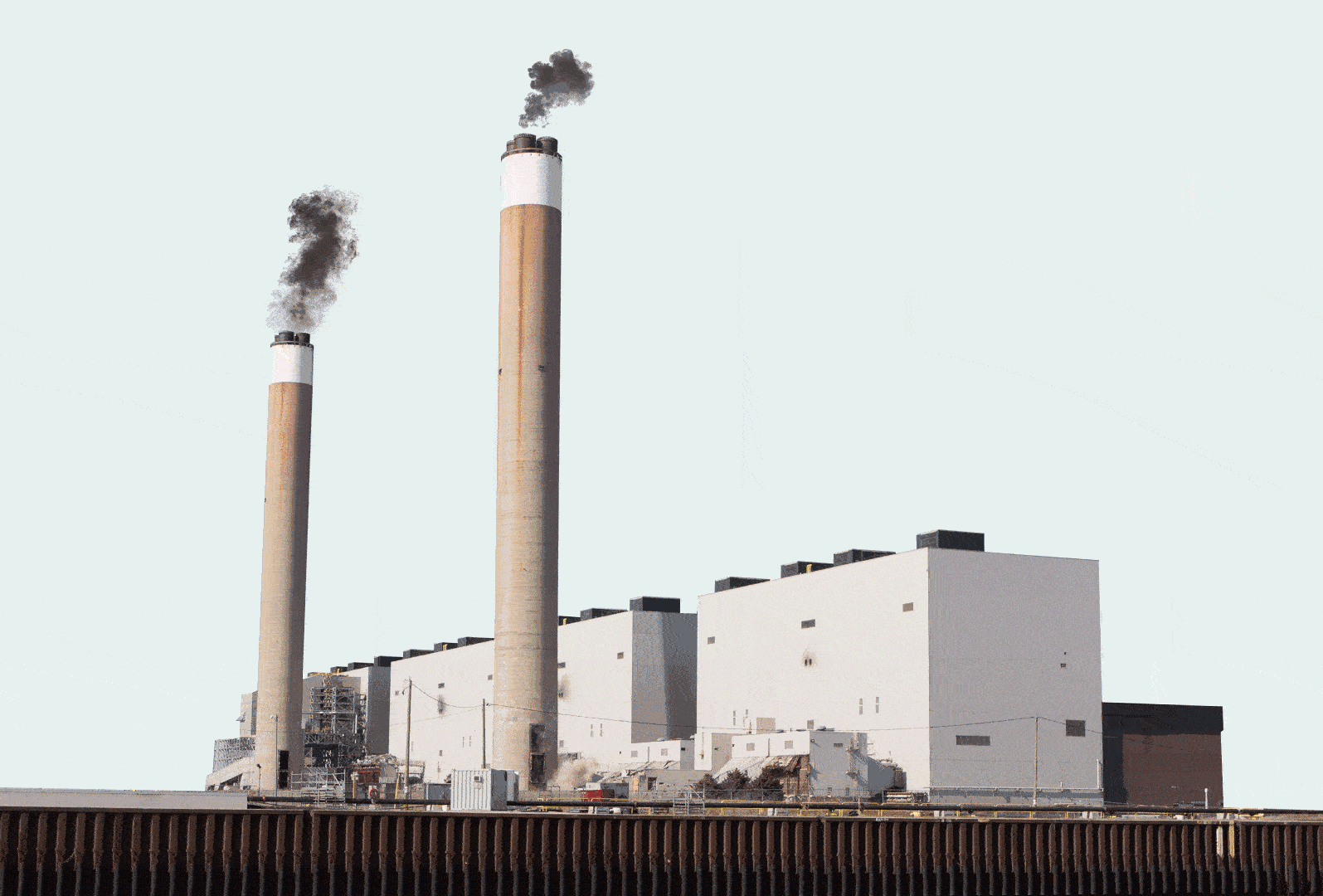
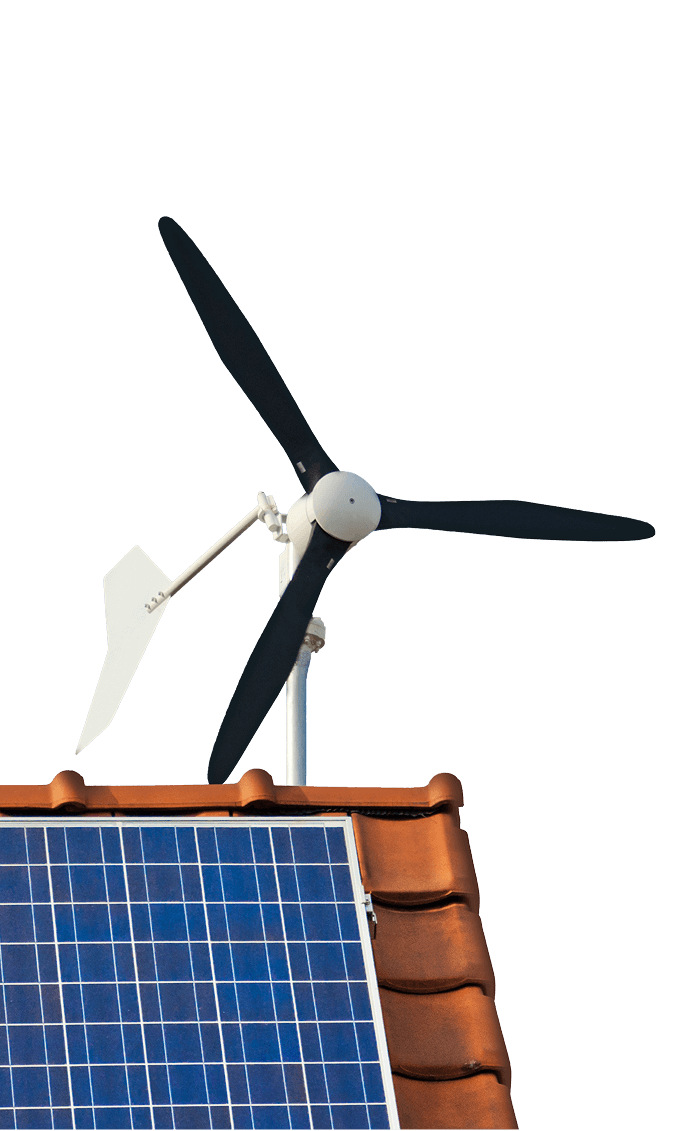
Distributed Energy Resources
Often referred to as Distributed Energy Resources (DERs), new technologies have emerged that can support locally owned facilities for electricity generation, control, and storage.
While large generating stations continue to play an essential role in Ontario’s electricity system, new smaller-scale tools enable communities to produce and distribute their own electricity, reducing the demand on the provincial electricity system.
Distribution-Connected Capacity
Have you seen a home or building with solar PV panels on the roof? Do you know a farm with a single wind turbine helping power their business?
This isn’t high-level power generation—but the electricity generated serves some, or all, of the energy needs of the owners, reducing demand on the provincial grid. These are small-scale generators, Demand Response Resources (DRRs) or energy storage that are owned and maintained by individuals, local facilities, or other businesses, connected to a low-voltage community grid and controlled by the local power company.
Ontario’s Distribution-Connected Capacity
(2022)
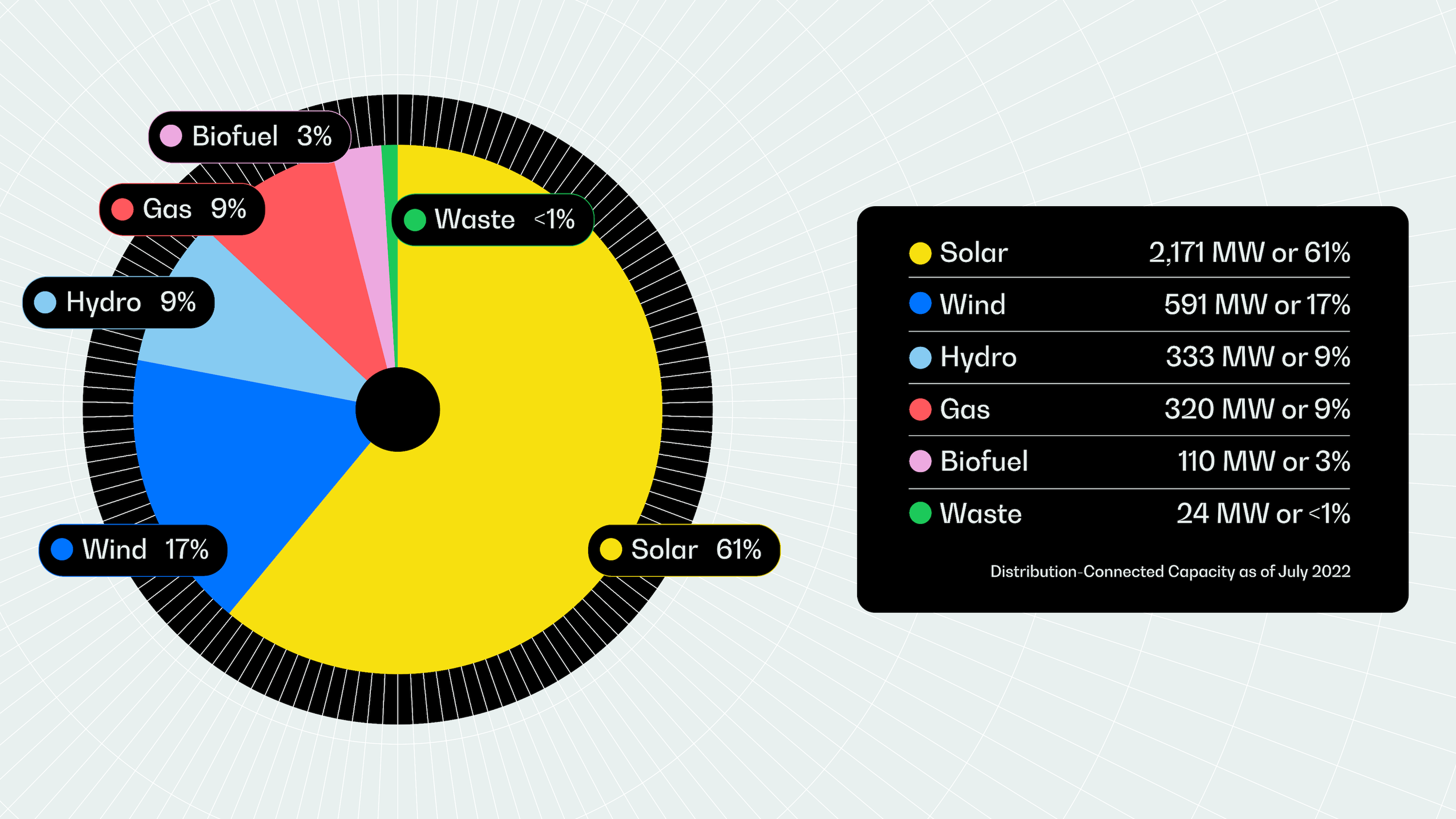
Based on the total outputs from each source for 2022, the mix for distribution-connected capacity is around 61% solar, 17% wind, 9% hydroelectricity, 9% natural gas, 3% biofuel, and <1% waste.
Notice how solar takes centre stage in this energy mix? This is where solar really shines! Individuals, local facilities, or other businesses can add solar PV panels to an existing building or structure to generate electricity for themselves.
